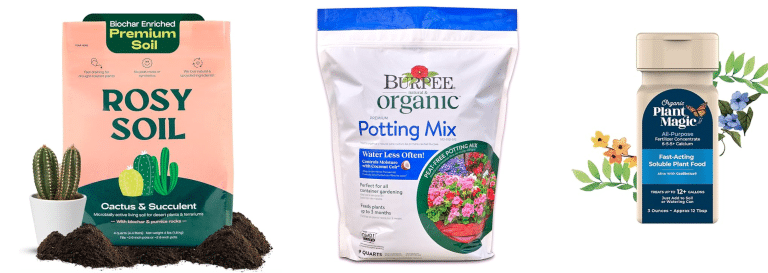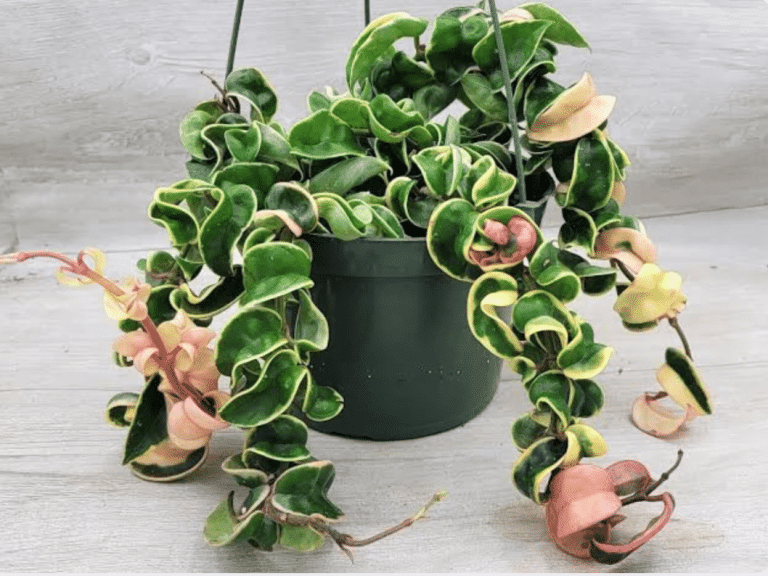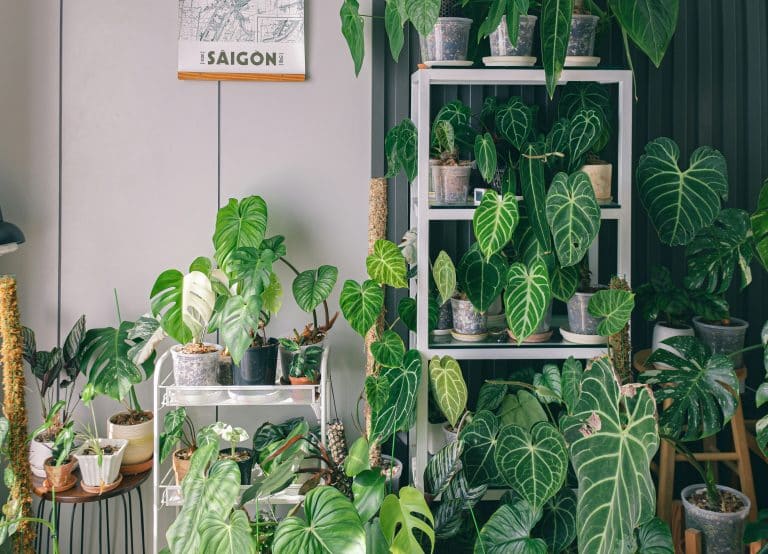11 Trailing Indoor plants to Beautify Any Room (& Where to Buy!)
Explore our curated list of best trailing indoor plants grown in our Brooklyn community home. Discover the care and maintenance tips, along with how to style them and make them an integral part of any room.

When you purchase through links on our site, we may earn an affiliate commission, which helps sustain our blog!
We are extremely biased about trailing houseplants—they are the secret ingredient to transforming any indoor space into a vibrant sanctuary. Over the years of living in our Brooklyn community home, filled with dozens of houseplants, we’ve learned a thing or two about the art of choosing and nurturing the best trailing houseplants. Each plant has its own story and needs, and it especially excites us to see the hanging houseplants vining in directions that are all on their own.
In this article, we’ll guide you through:
Let’s dive in.
Read also: Best soil and fertilizers for trailing houseplants, and how to style them
Summary:
What are the best trailing houseplants?
English Ivy, String Of Pearls, Lipstick Plant, Philodendron, Boston Fern, Pothos, Tradescantia, are some of the best trailing houseplants anyone can grow. They need minimal care and thrive indoors with the right amount of indirect sunlight.
Snapshot of our Top 5 picks (Swipe left)
1. English ivy
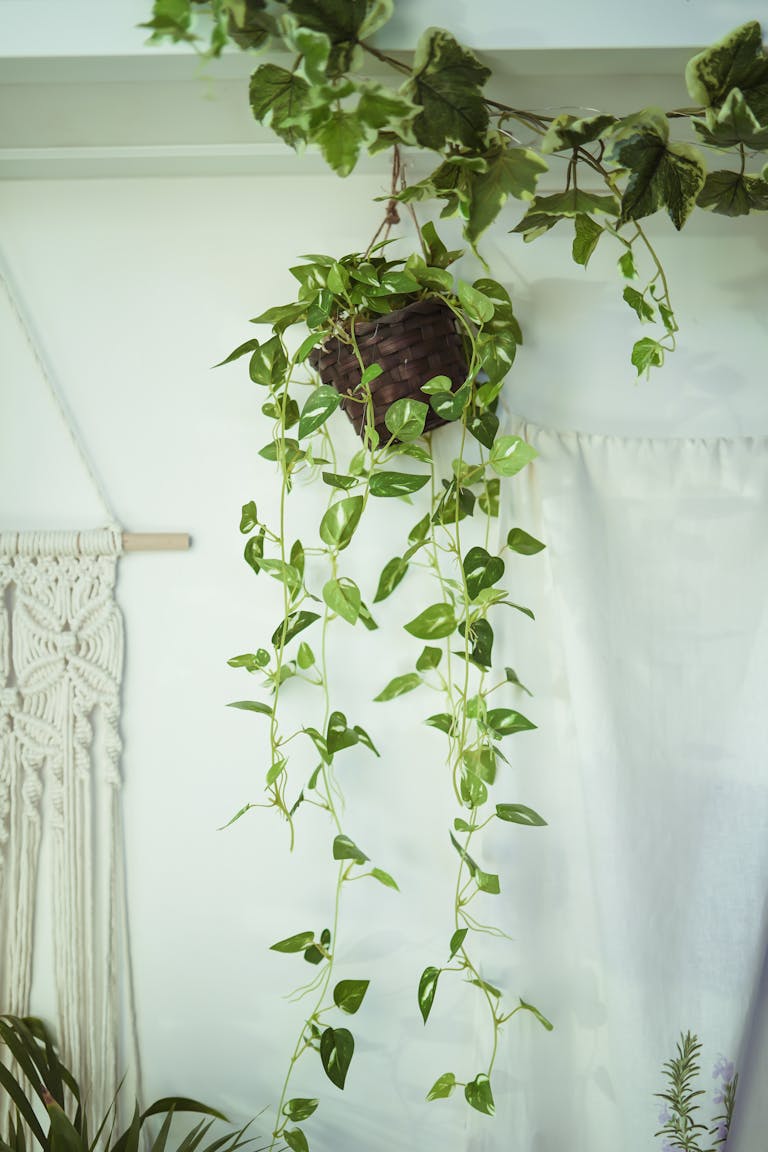
2. String of pearls
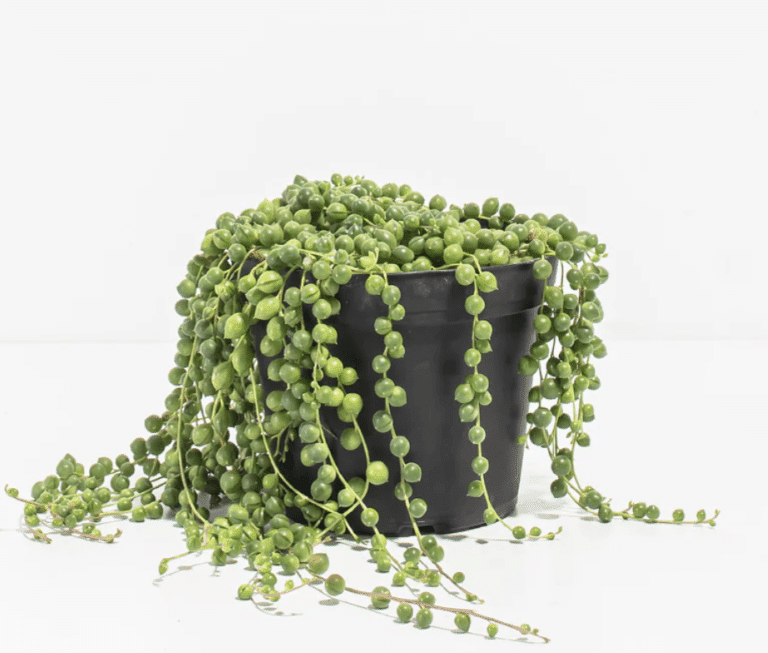
3. Lipstick plant
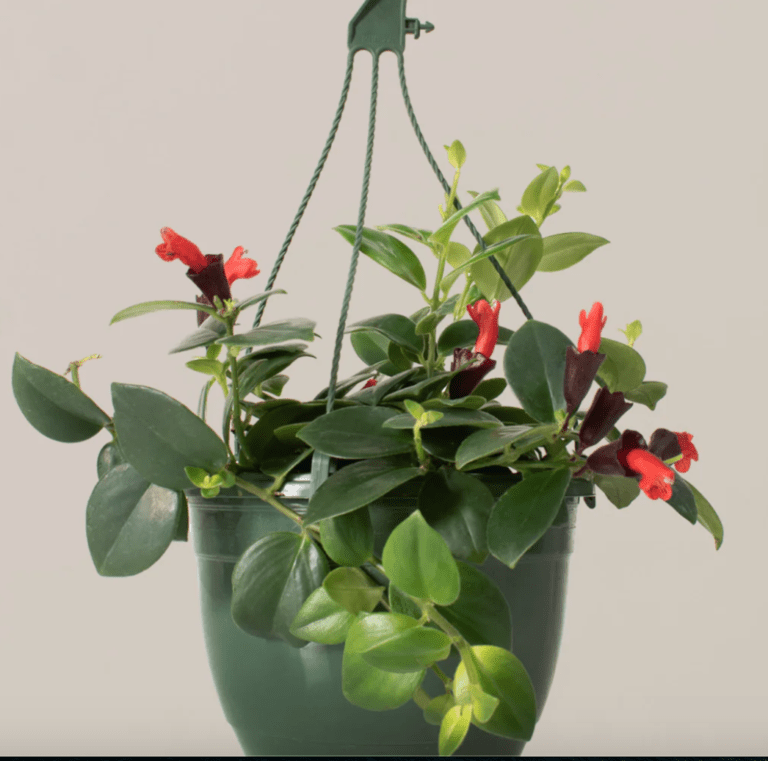
4. Philodendron
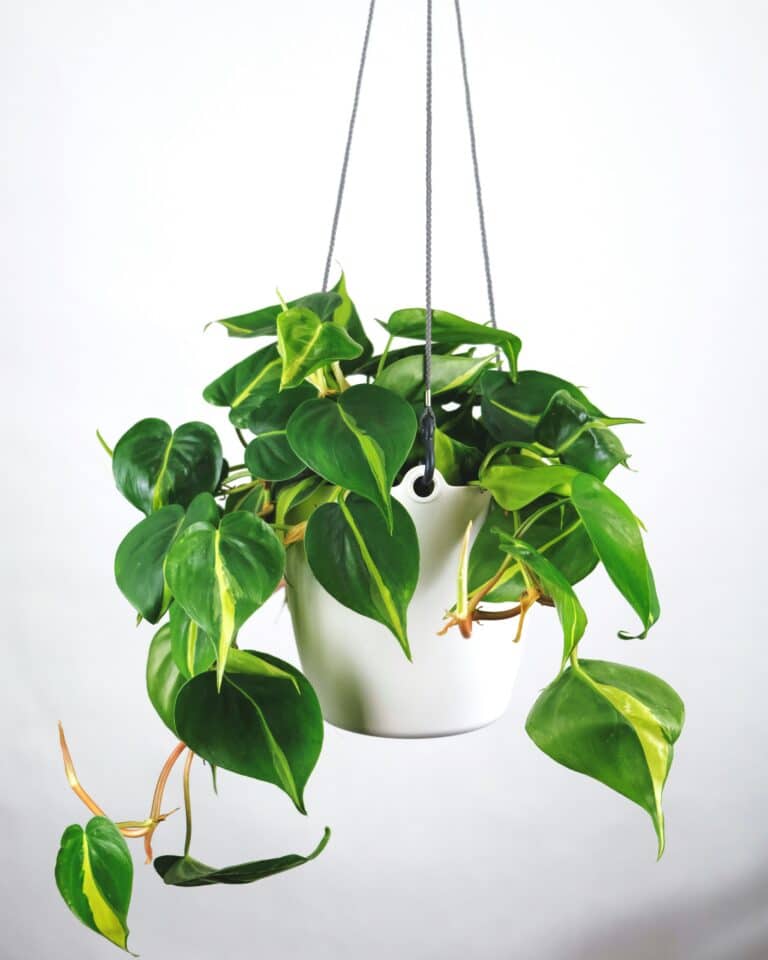
5. Boston fern

Best trailing houseplants for low to Medium light
1. Pothos
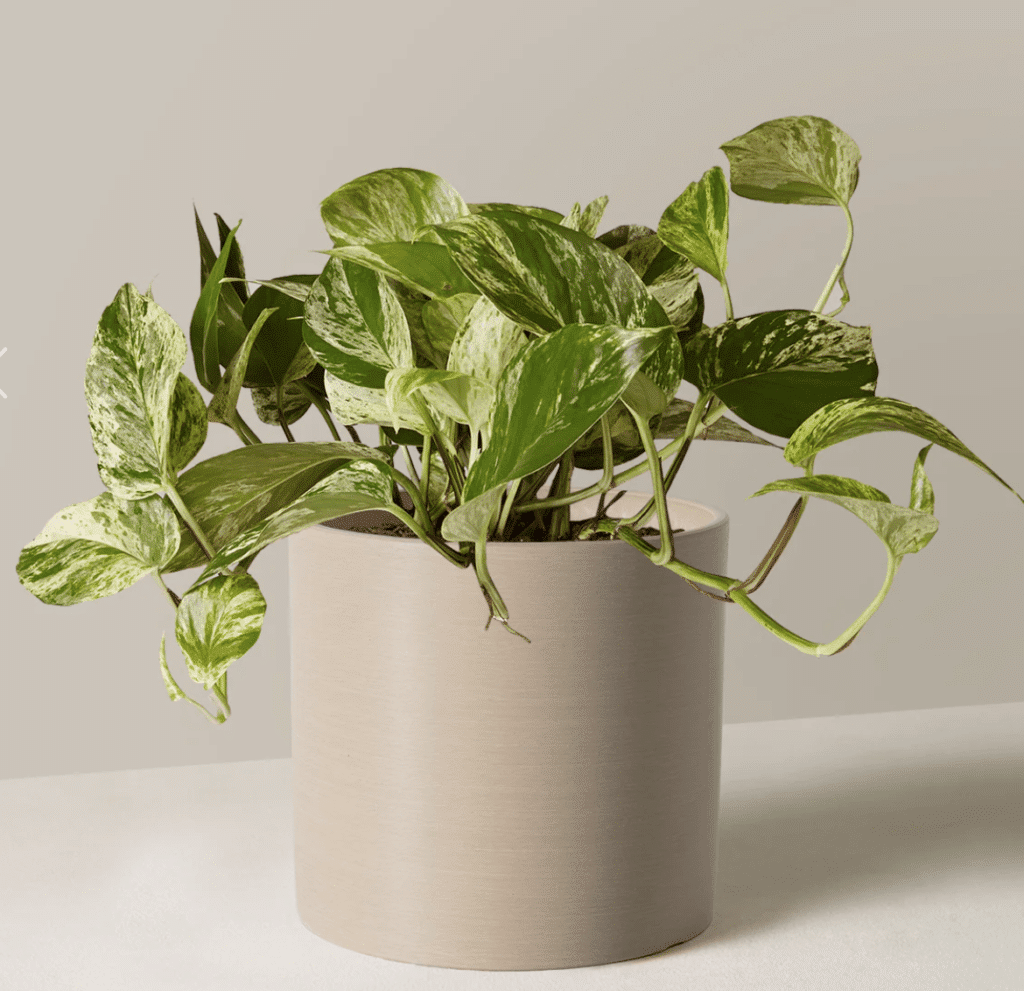
Toxic
Low light
Grows upto 10 feet
East/North facing windows
Toxic
low light
grows to 10 feet
east/North facing windows
The Pothos (aka Epipremnum aureum): This Trailing indoor plant, a member of the Araceae family, has stunning heart-shaped leaves, often variegated with beautiful shades of green, white, or yellow. We have placed our Pothos in one of our east-facing rooms where it thrives in bright, indirect light. Styled in a hanging planter, its trailing vines cascade beautifully.
However, be aware that Pothos is toxic to pets if ingested — we recommend putting it high above and tying the vines to the walls where cats can’t reach.(Also — this may look like philodendron, but the main difference is the leaves texture — this one has thicker waxier leaves that come in many colors, while philodendrons come in shades of green and are smooth and thin!)
Care tip:
- Water it every 1-2 weeks, allowing the soil to dry out between waterings.
- Watch for yellowing leaves — a sign of overwatering, or brown tips that indicate too much direct sunlight
Propagation tip:
- Cut a 4-6 inch stem just below a node with 4-5 leaves.
- Place it in a jar of water, ensuring the node is submerged, and then place in bright, indirect light.
- Roots will develop in 2-4 weeks
Symbolism and zodiac signs:
- The Pothos plant symbolizes perseverance and prosperity — ideal for Scorpios!
Pros and cons
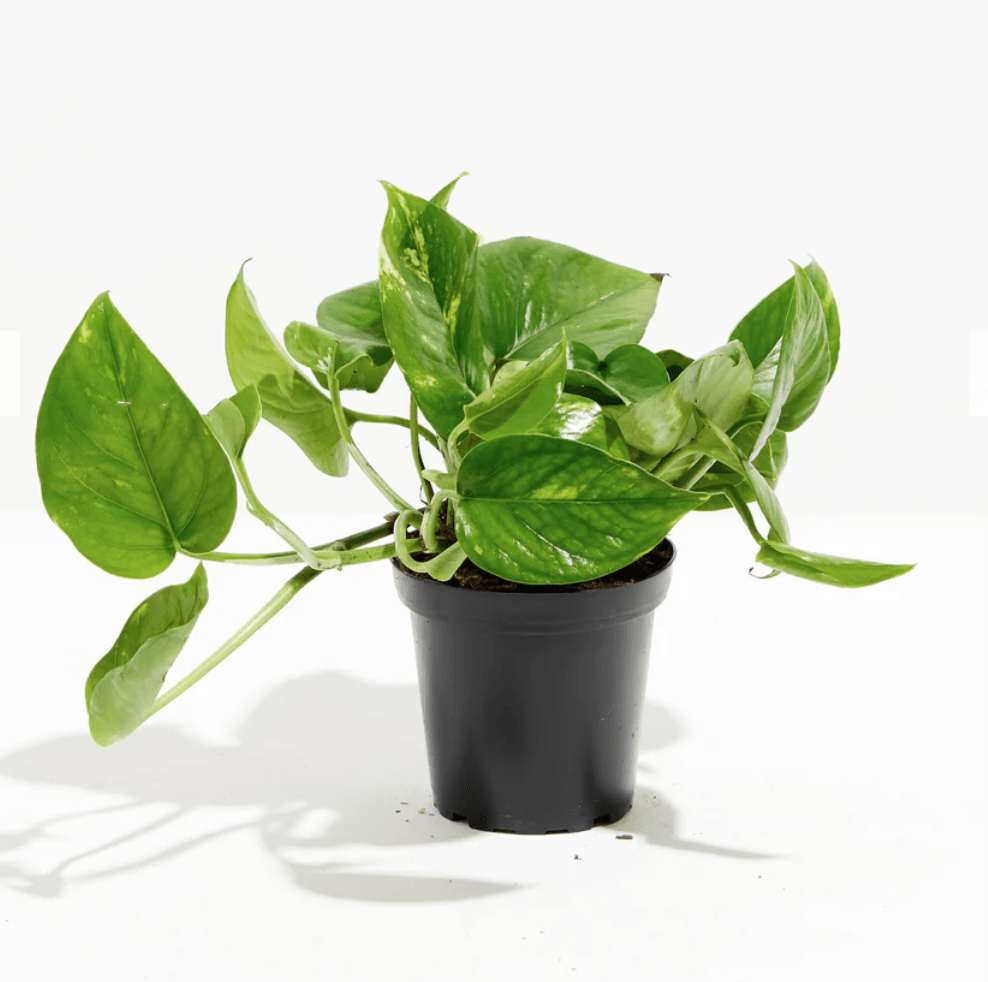
($43)

($48)
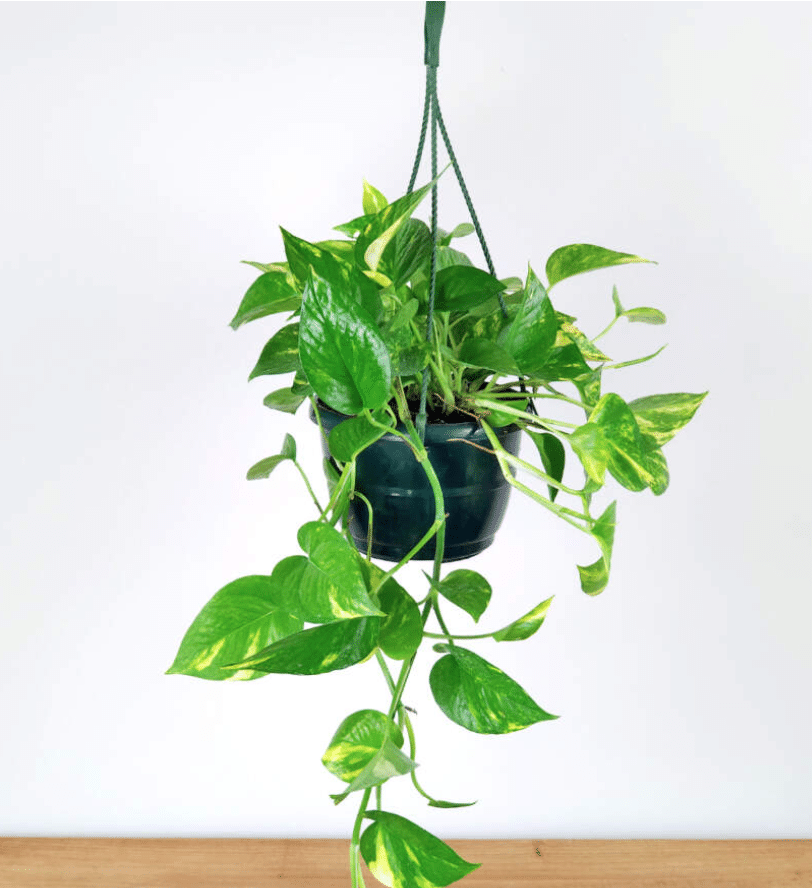
($35)
$44
“My Golden Pothos has grown so quickly! It’s perfect for hanging baskets and requires minimal maintenance”
2. Boston fern
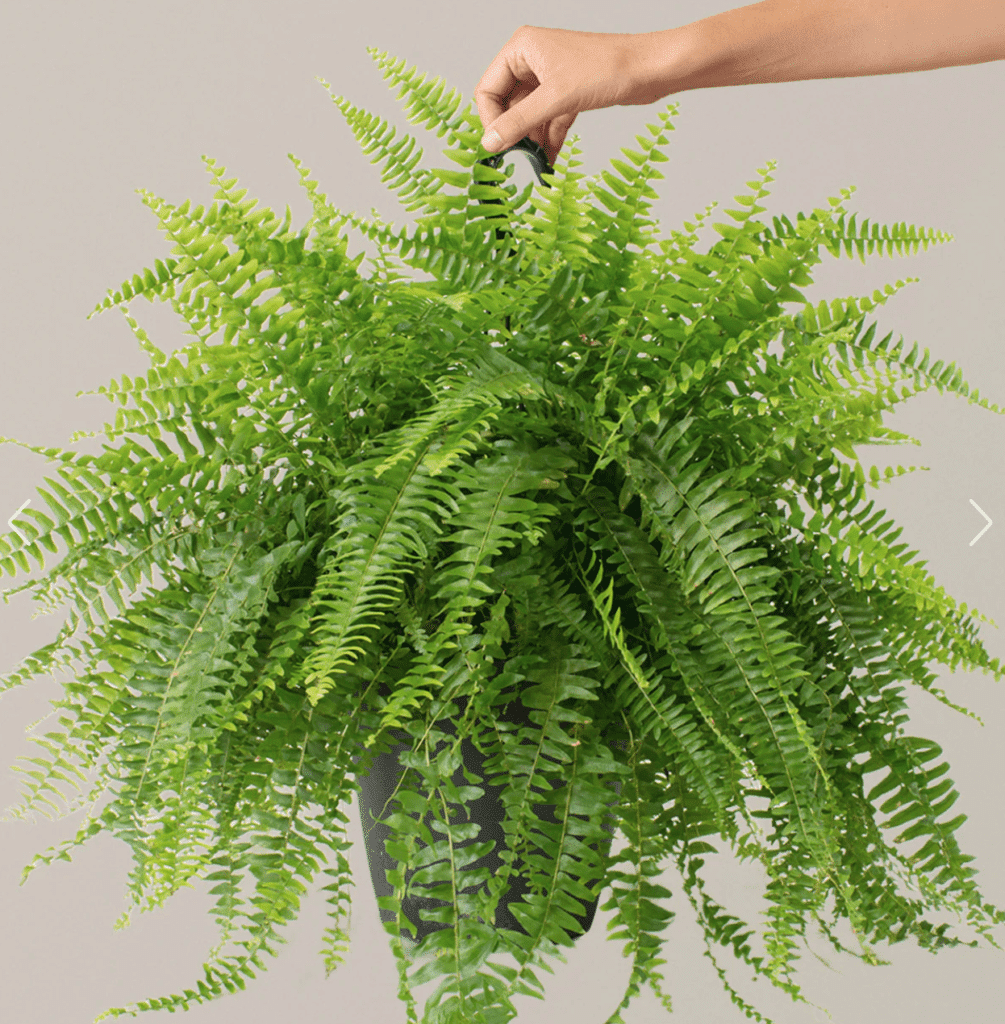
pet safe
Medium light
Grows upto 4 feet
East/south facing windows
Pet safe
medium light
grows to 4 feet
east/South facing windows
The Boston Fern (aka Nephrolepis exaltata): This Trailing indoor plant, part of the Nephrolepidaceae family, has lush, arching fronds with feather-like leaflets. We have placed ours in one of our North-facing room. This one thrive in low to medium light and prefer high humidity – so a bit more demanding, but worth it for their aesthetic appeal. These could also work great in bathroom as hanging plants!
Care tip:
- Place it in indirect light and keep the soil consistently moist, watering when the top inch feels dry.
- Mist regularly to maintain high humidity.
- When fronds turning yellow, it indicates low humidity or under-watering.
Propagation tip:
- Divide a healthy plant into sections which has fronds and roots.
- Plant them in well-draining potting soil.
- Keep the soil moist and place in bright, indirect light. Roots should establish in 4-6 weeks.
Symbolism and zodiac signs:
- Symbolizes sincerity and shelter. Ideal for Pisces known for their nurturing and empathetic nature
Pros and cons
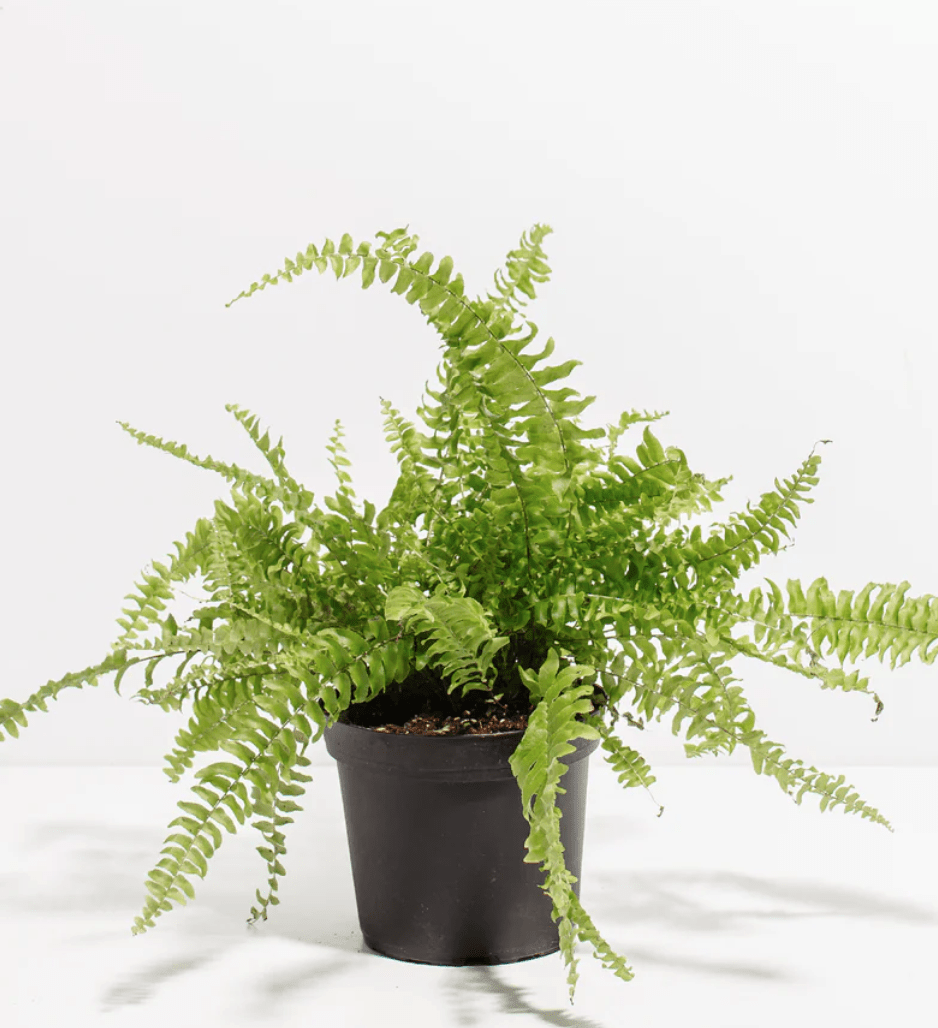
($58)

($50)
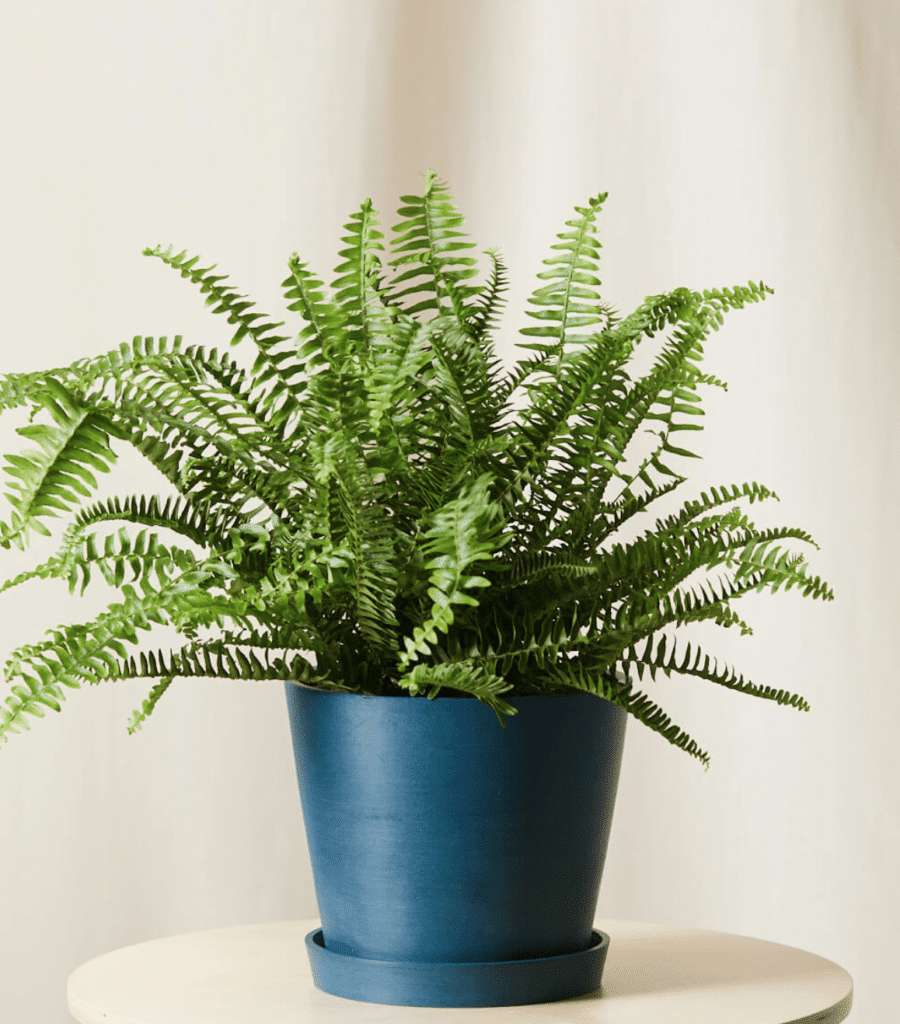
($31)
$24
“Beautiful, lush plant that adds a lot of greenery to my home. Needs regular watering”
3. Birds nest fern
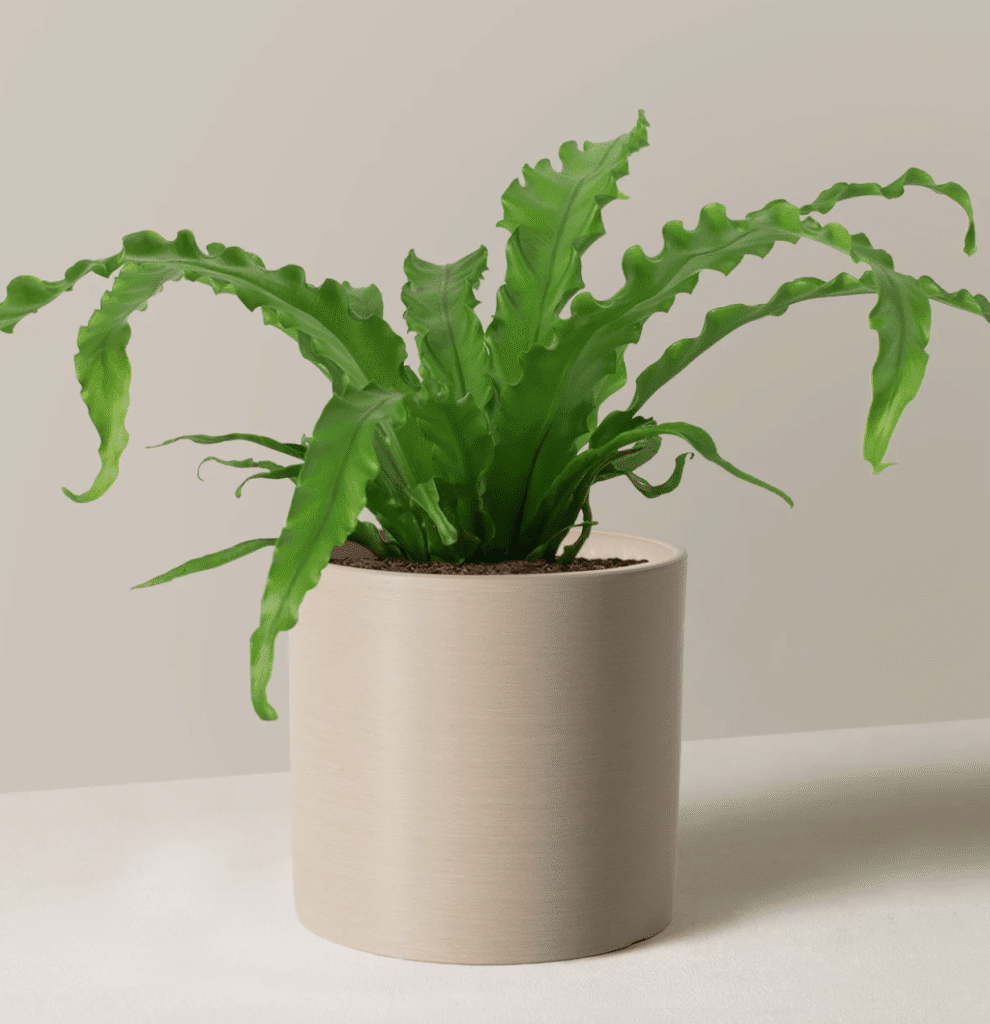
Pet safe
Low light
Grows upto 3-4 feet
East/west facing windows
pet safe
low, light
grows to 3-4 feet
east/west windows
This is a stunning trailing indoor plant that brings a fresh, tropical vibe to your home. Its large, wavy-edged fronds that radiate from a central rosette creates a lush, fountain-like effect. The glossy, bright green leaves grow up to 2 feet long!
We’ve placed ours in a medium-light spot in the east-facing reading room in a sleek, ceramic pot. You could also ofcourse hang it since the leaves are large and drape down! The Bird’s Nest Fern loves humidity and indirect light — so a bathroom or kitchen is also a great spot for it!
Care tip:
- Keep the soil consistently moist, watering when the top inch feels dry.
- Avoid direct sunlight to prevent leaf burn, and mist regularly or place near a humidifier to keep it happy.
Propagation tip:
- Divide the plant at the root ball into smaller sections, ensuring each has roots and fronds.
- Plant each section in a pot with moist, well-draining soil and keep in indirect light. New growth will appear in 4-6 weeks.
Symbolism and zodiac signs:
- Symbolizes resilience and renewal, making it ideal for nurturing Virgos who appreciate routine and care for their spaces
Pros and cons
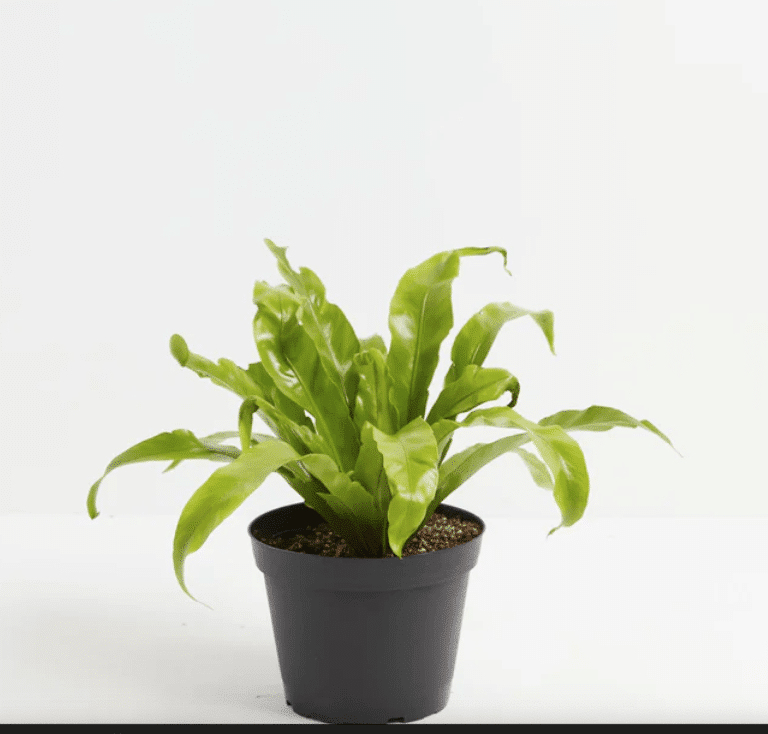
($46)

($58)

($37)
$40
“I love how dramatic this plant looks. It requires regular watering and misting but is worth it for the bold foliage”
4. Spider Plant

Pet safe
low/medium light
Grows upto 4 feet
East/north facing windows
Pet safe
Low/medium, light
grows to 4 feet
east/North facing windows
The Spider Plant (aka Chlorophytum comosum): This Trailing indoor plant is a member of the Asparagaceae family. It is super slender, has arching leaves, and boasts a bursting green with a distinctive creamy white stripe running down the center. This plant doesn’t just sit pretty—its cascading foliage can look stunning in hanging baskets or even in high shelves where you don’t get much sunlight.
We have placed our Spider Plant in the east-facing reading room, where it benefits from a lot of indirect light. Occasionally, the Spider Plant produces small white flowers and spawns mini “spiderettes” that can be propagated easily. Personally, we’ve styled it in a maroon ceramic pot that complements both the plant and the decor of our rustic reading room.
Read also: Curly spider plant care and Hawaiian spider plant care
Care tip:
- Water weekly, allowing the top inch of soil to dry out between waterings.
- Place in bright, indirect light and avoid direct sunlight to prevent leaf scorch.
- Browning leaf tips can indicate fluoride sensitivity – try using distilled or rainwater.
Propagation tip:
- Place a spiderette in a glass jar filled with room temperature distilled water. Only roots are submerged, not the leaves.
- Place the jar in bright, indirect light and change the water every week or so to prevent stagnation.
- Roots should start to appear within a week or two. Once they are 2-3 inches long, transfer to soil.
Symbolism and zodiac signs:
- The Spider Plant symbolizes abundance, and purity, and good luck because of its prolific nature in producing offshoots. Perfectly suited for Virgo’s who are known for their attention to health and cleanliness, and are most apt to care for this plant.
Pros and cons

($43)
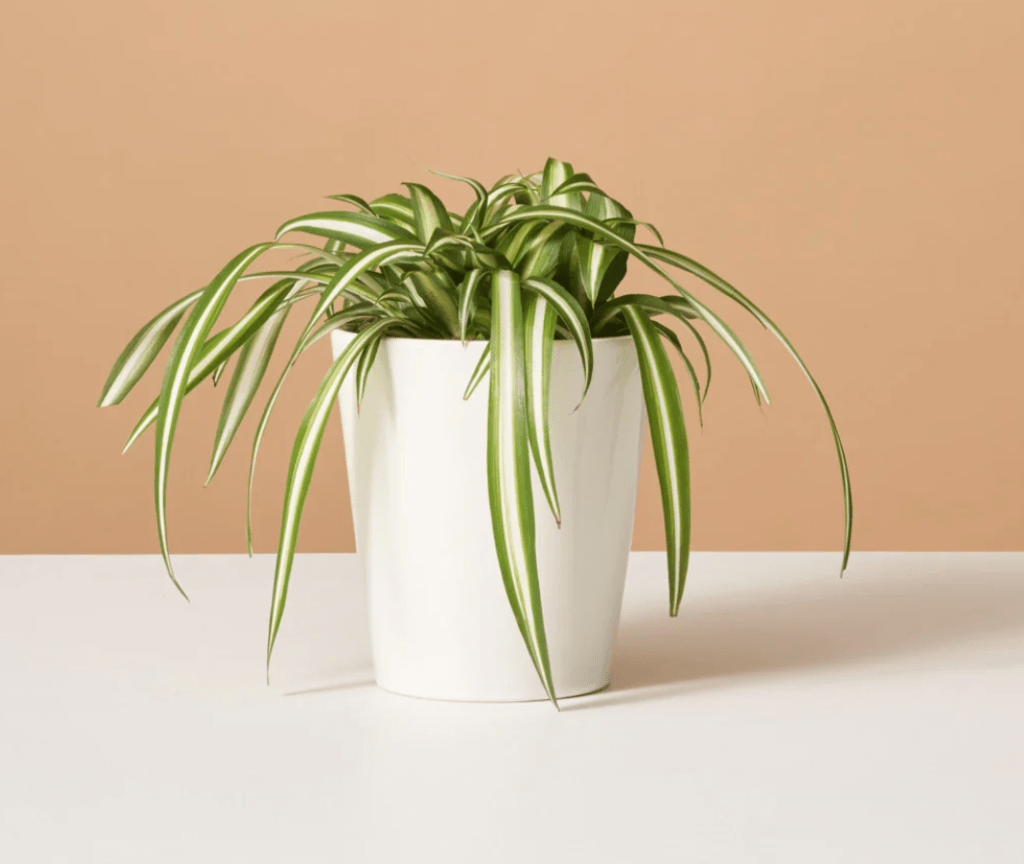
($69)
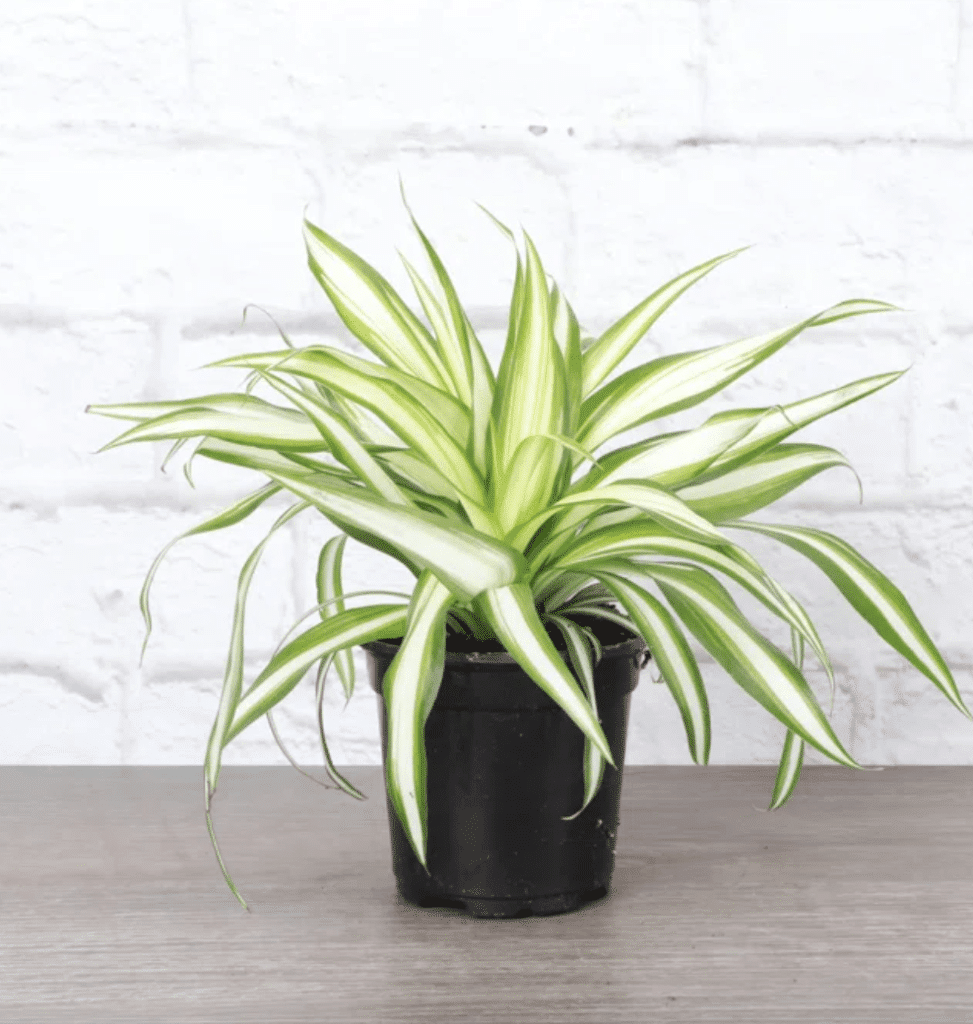
($37)
$15
“This plant is very forgiving and easy to propagate. Great for plant beginners”
5. Philodendron
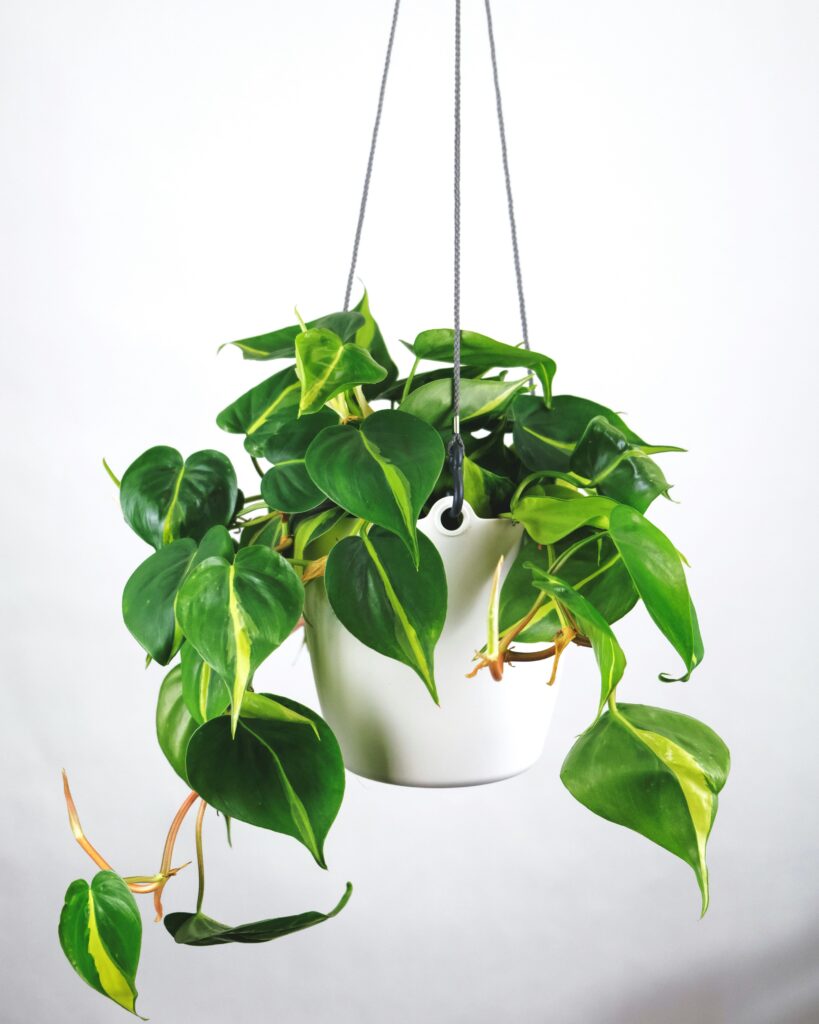
Toxic
low/medium light
Grows upto 4 feet
East/north facing windows
Toxic
Low/medium, light
grows to 4 feet
east/North facing windows
The Philodendron (aka Philodendron spp.): This Trailing indoor plant, a member of the Araceae family, has heart-shaped, glossy green leaves. We have placed ours in the east-facing reading room, where it thrives in bright, indirect light.
Its vines cascade around the top of the window frames that add a super inviting dynamic element to the room. When mature, the Philodendron can trail or climb, growing up to 10 feet long indoors! While Philodendrons rarely flower indoors, when they do, they produce small, white, or greenish flowers 🙂
Read also: Philodendron Micans care and styling guide
Care tip:
- Thrive in bright, indirect light — need watering when the top inch of soil is dry. Avoid direct sunlight to prevent leaf burn . They’re low-maintenance — don’t let the furry animals ingest the leaves.
Propagation tip:
- Cut a 6-inch stem with at least one node, place it in water until roots are 1-2 inches long (about 4-6 weeks), then transplant into well-draining soil
Symbolism and zodiac signs:
- Often associated with health and growth — it is well-suited for Pisces for their nurturing and caring nature
Pros and cons
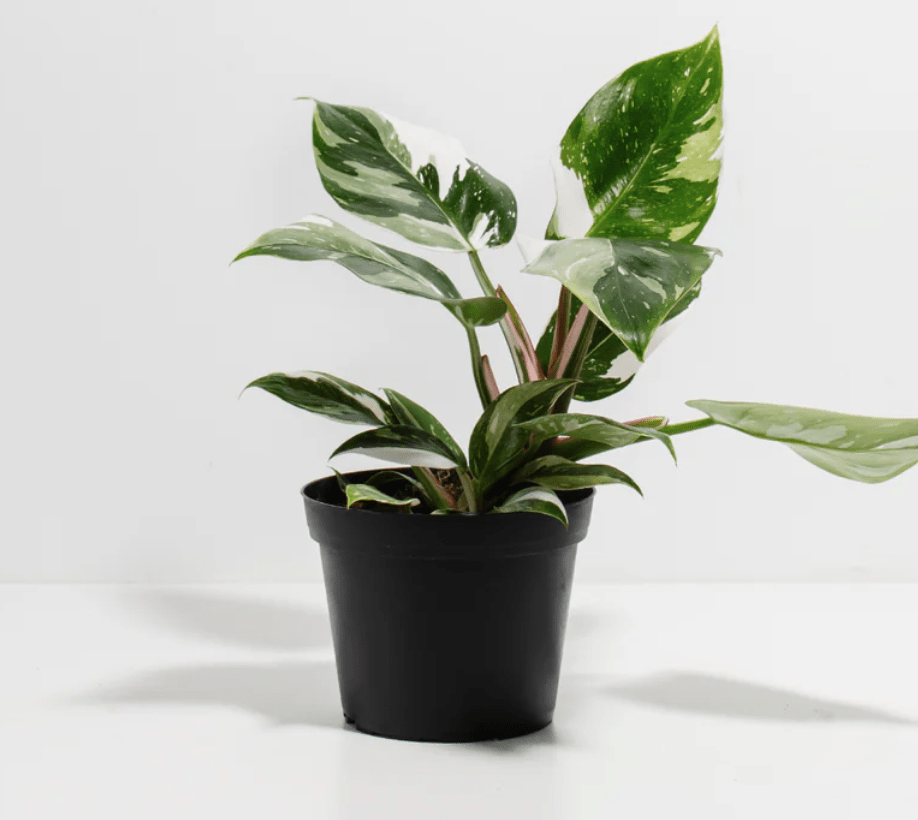
($43)
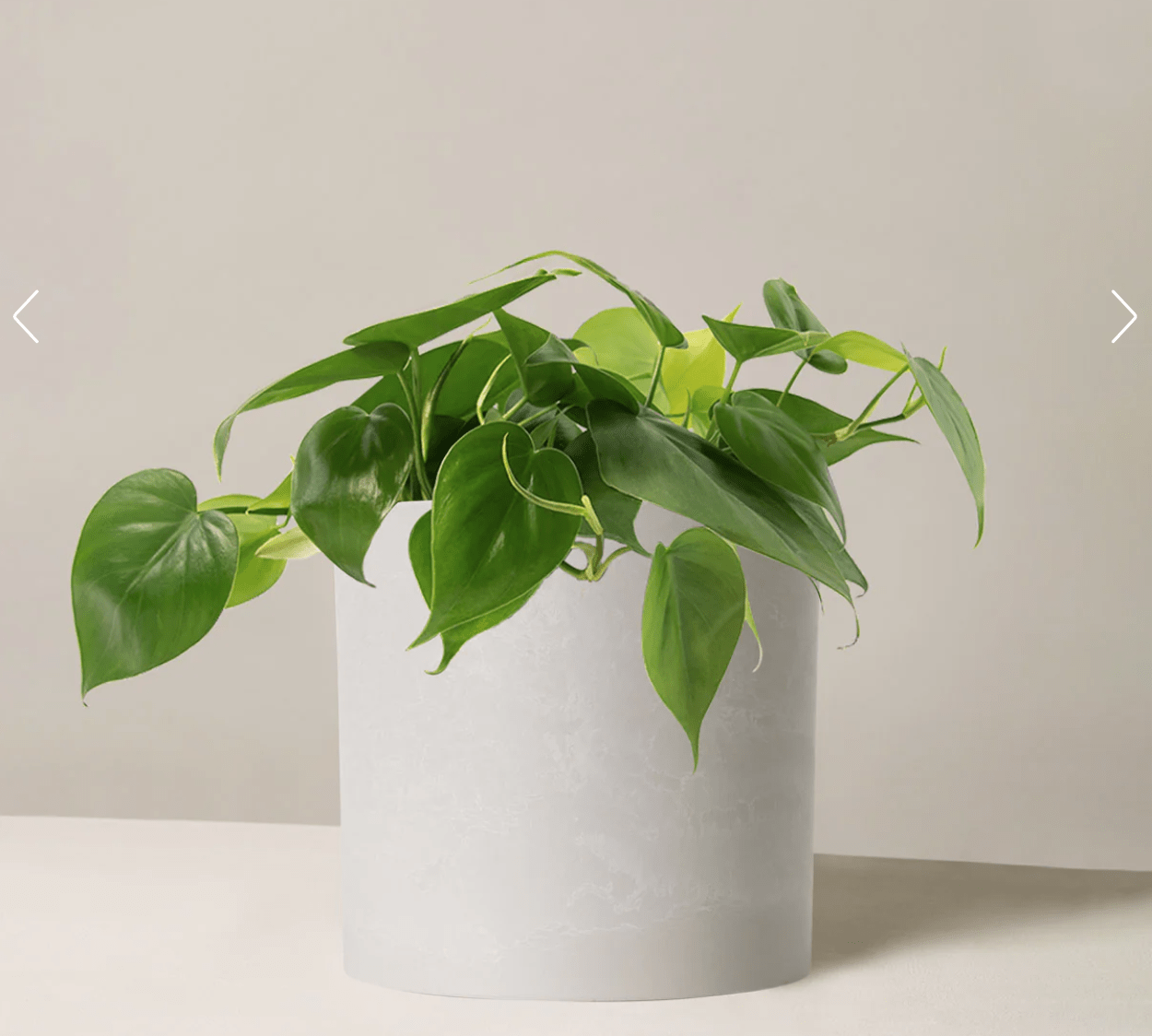
($48)
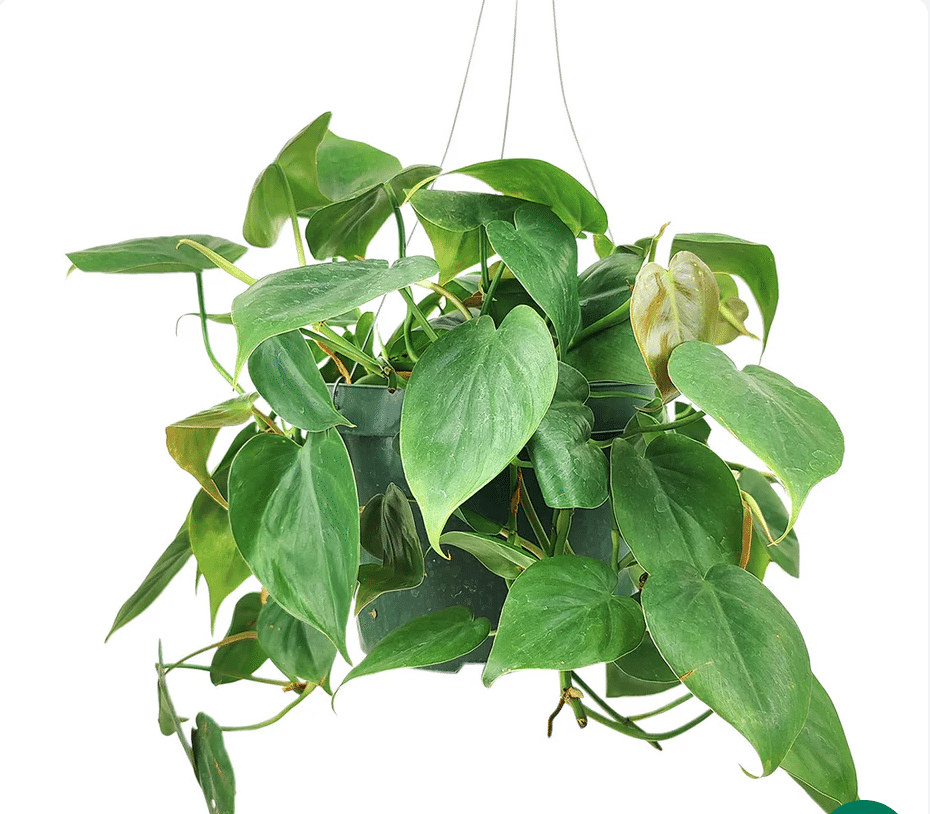
($17)
($22)
“Philodendron is stunning and easy to care for. It’s growing beautifully and quickly!” – Amazon Customer
Best trailing indoor plants for bright light
1. Lipstick plant
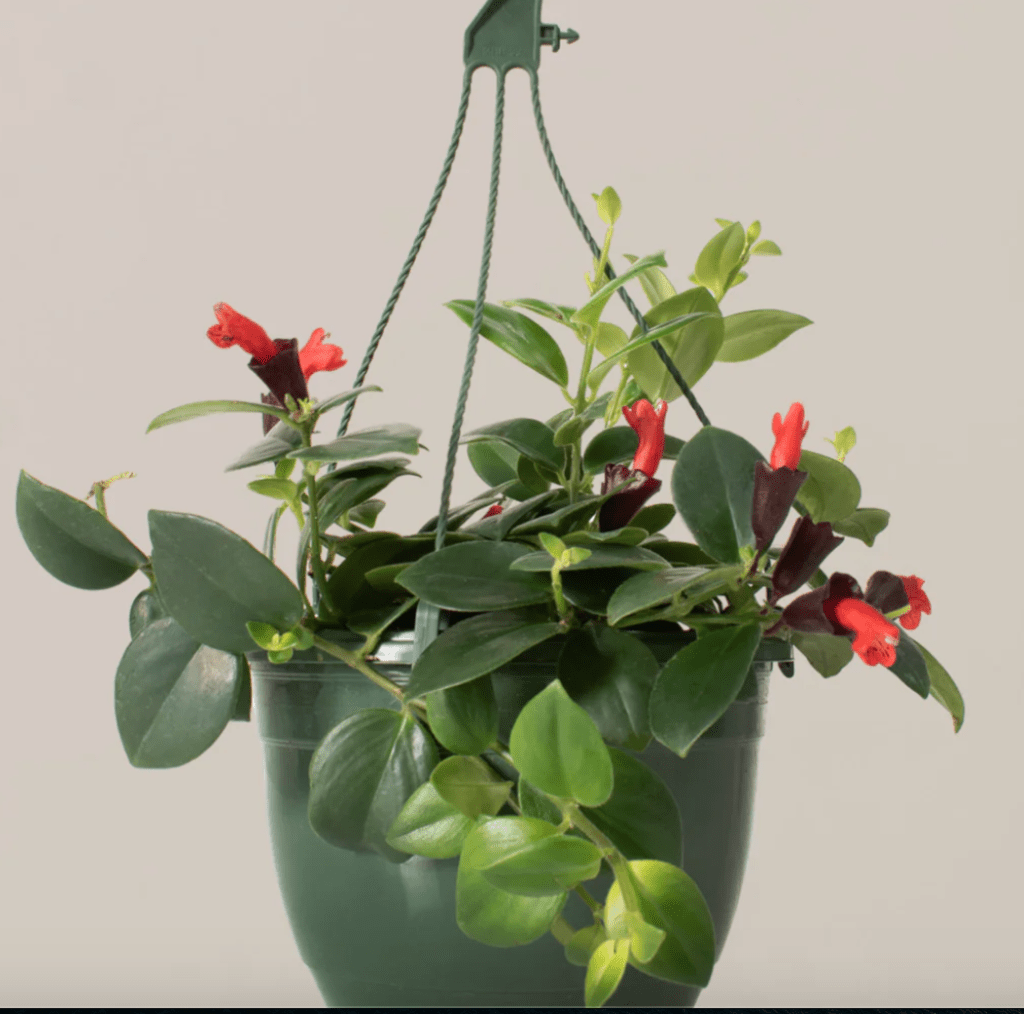
Pet safe
Medium to Bright light
Grows upto 4 feet
East/west facing windows
Pet safe
Bright/medium, light
grows to 4 feet
east/west facing windows
This charming trailing indoor plant belongs to the Gesneriaceae family. We love its dark green, waxy leaves, which elegantly cascade from hanging planters. The leaves themselves are oval and slightly pointed that add a touch of texture and depth to your decor.
The most striking feature is its vibrant, tube-shaped flowers (Refer our list of flowering houseplants for more info). These buds, resembling a tube of lipstick, pop open to reveal a burst of red or orange. They typically bloom in summer and last a few weeks. Our Lipstick Plant is placed it in the east-facing reading room where it can enjoy the morning sun!
Care tip:
- Thrives in bright – indirect light. Water it when the top inch of soil feels dry, about once a week, but avoid soggy soil to prevent root rot.
- Look for leaves curling or browning which is a sign it needs more humidity – so a misting every few days will help
Propagation tip:
- Cut a 4-6 inch stem just below a leaf node, remove the lower leaves, and place it in a jar of water; roots will sprout in 2-3 weeks, then transfer to well-draining potting mix once roots are 1-2 inches long
Symbolism and zodiac signs:
- Symbolizes joy and vibrant energy, making it perfect for enthusiastic and nurturing Leos who thrive on bringing life and color into their spaces
Pros and cons
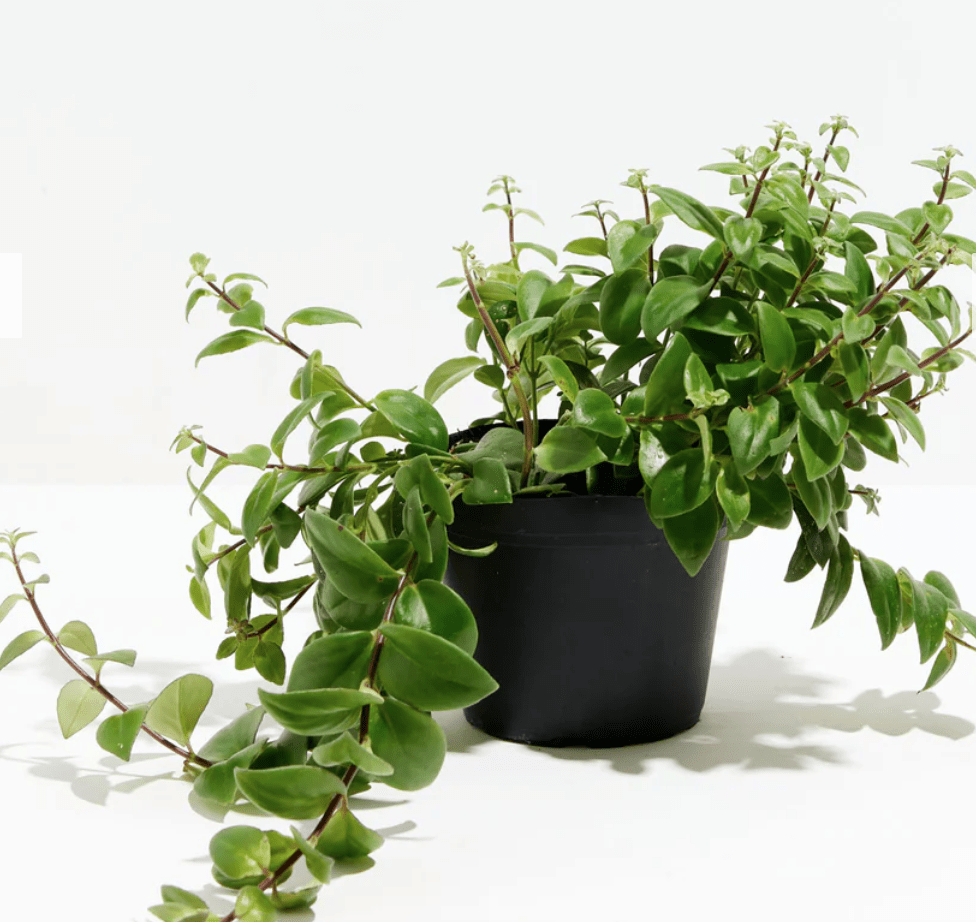
($58)

($58)

($79)
$22
“The flowers of the lipstick plant are the best! like tiny lipstick buds!” – Amazon customer
2. English Ivy
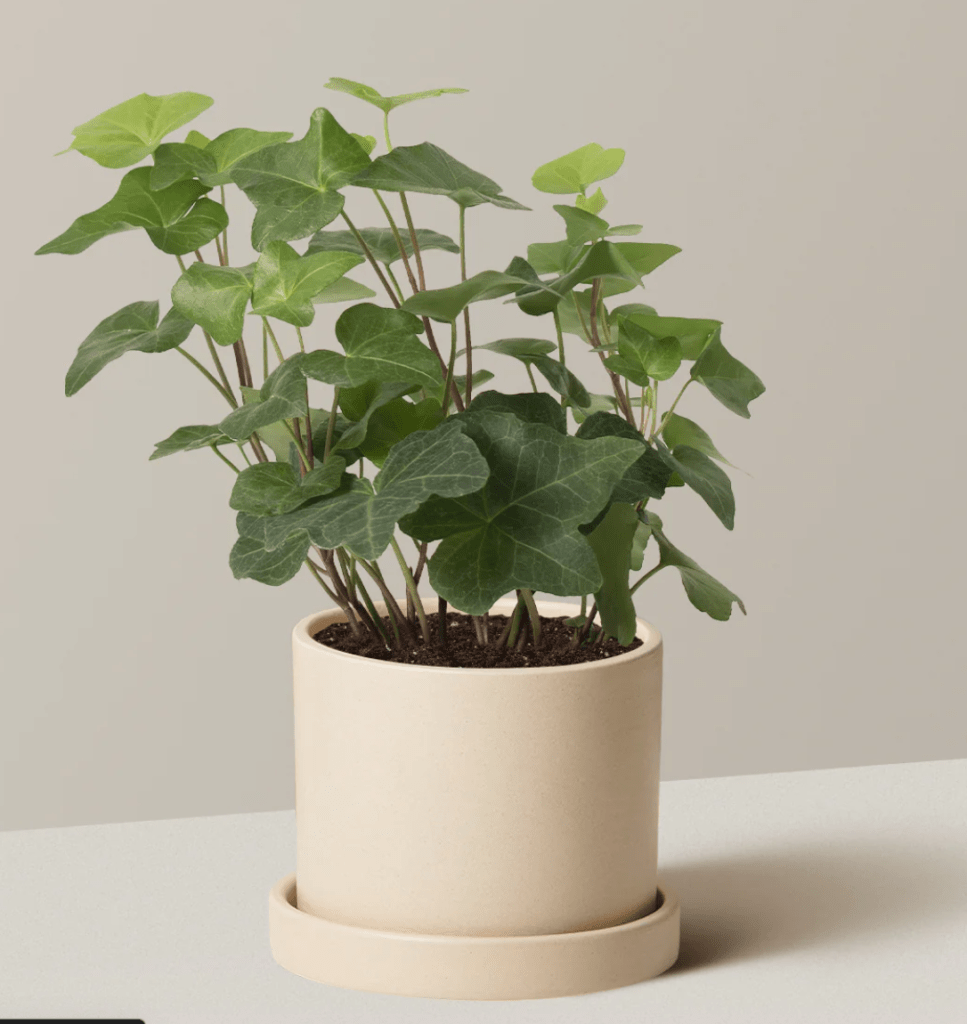
Toxic
Medium to Bright light
Grows upto 8 feet
East/North facing windows
Toxic
Medium/Bright light
grows to 8 feet
east/North facing windows
The English Ivy (aka Hedera helix): This Trailing indoor plant belongs to the Araliaceae family. It has charming lobed leaves and variegated patterns of green and white. It thrives in low light so we have place it in our east-facing room on the top floor, but can certainly be placed in west or north facing windows.
We’ve styled it cascading from a hanging planter, which drapes around a chair by the window under which one of our roommates loves to read! When mature, it can trail up to 8-10 feet long, creating a lush, indoor vine effect.
Care tip:
- Thrives in bright, indirect light — needs watering when the top inch of soil is dry.
- Mist regularly to maintain humidity and watch for yellow leaves which is a sign of overwatering.
- No direct sunlight for this one — its leaves scorch..
Propagation tip:
- Cut a 4-6 inch stem with at least three leaves, place it in water until roots are 1-2 inches long (about 4-6 weeks), then transplant into well-draining soil..
Symbolism and zodiac signs:
- English Ivy symbolizes fidelity and eternal life — well-suited for Capricorns for their dedication and perseverance
Pros and cons
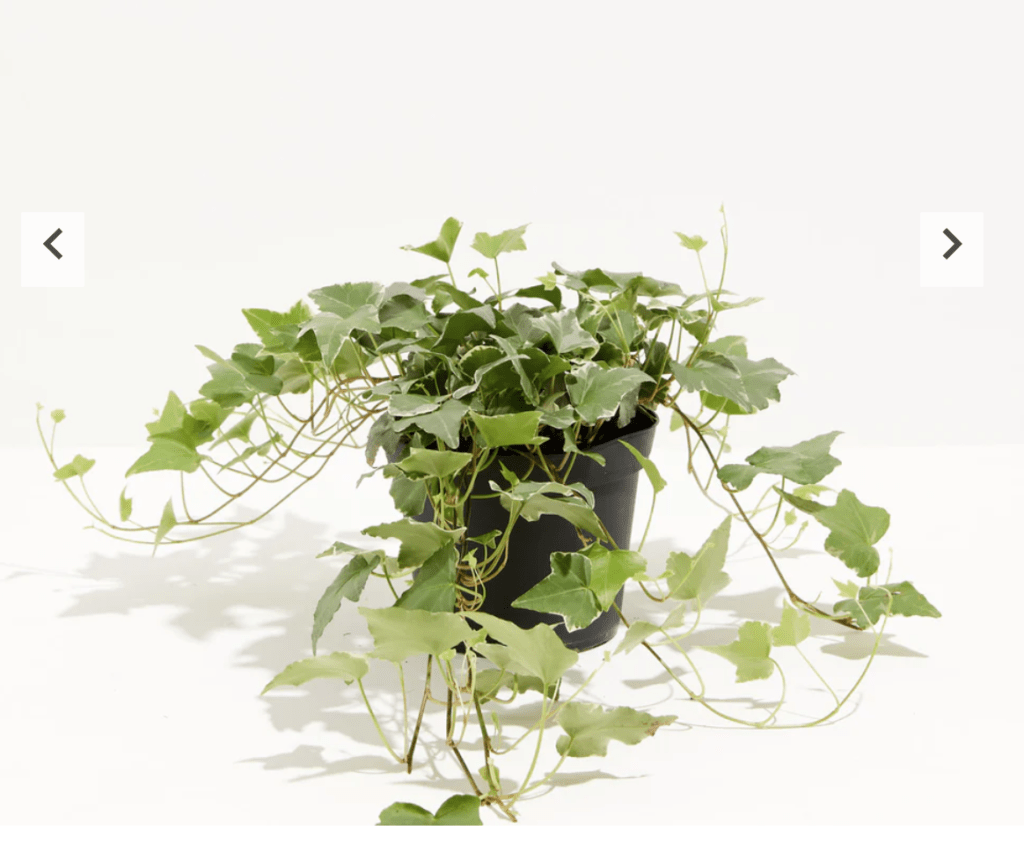
($58)

($33)

($19)
$24
“Great plant for beginners. It’s hardy and does well in indirect light”
3. String of pearls

Mildly toxic
Bright light
Grows upto 6-8 feet
East/west facing windows
Mildly Toxic
Bright, light
grows to 6-8 feet
east/west facing windows
The String of Pearls is a stunning trailing houseplant from the Asteraceae family. Its trailing stems adorned with round, bead-like leaves resemble a string of pearls. These quirky leaves store water – we know, this is one of those exotic houseplants! – so it’s a drought-tolerant beauty.
We’ve placed ours in a west-facing living room and is easy to care for – just let the soil dry out completely between waterings. While it’s not pet-friendly, it is not highly toxic as well so we have kept it high above out of reach from our cats. Occasionally, it graces us with tiny, white flowers that have a subtle, cinnamon scent and bloom in late spring to early summer!
Care tip:
- Water only when the soil is completely dry, about once every two to three weeks.
- Watch for shriveled pearls, which means it needs more water.
- And avoid letting water sit in the saucer of your hanging planter to prevent root rot
Propagation tip:
- Cut a 4-6 inch stem, remove the bottom pearls, and place it in water;
- roots will appear in 2-3 weeks, then transfer to a well-draining cactus mix once roots are 1-2 inches long
Symbolism and zodiac signs:
- Symbolizes joy and vibrant energy, making it perfect for enthusiastic and nurturing Leos who thrive on bringing life and color into their spaces
Pros and cons

($58)

($33)
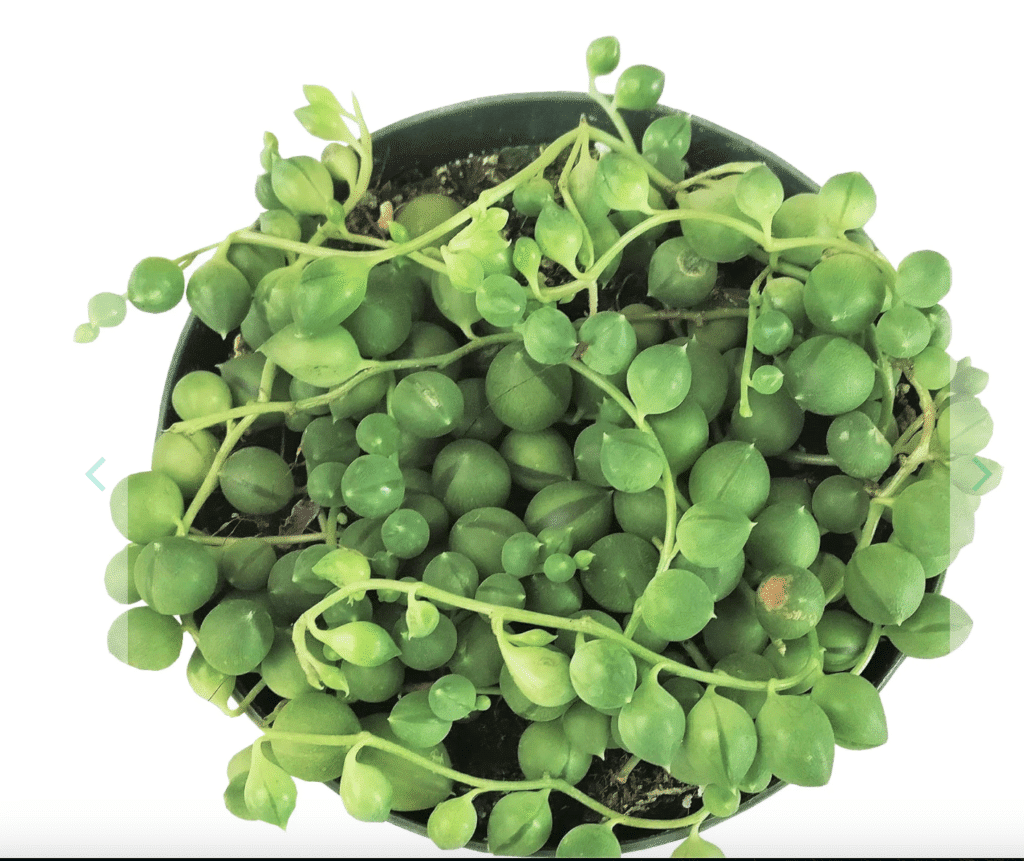
($38)
$10
“Like pearls they drape over my window and i have tied it up so that it goes up and covers the whole rectangle of my window frame!”
4. peperomia
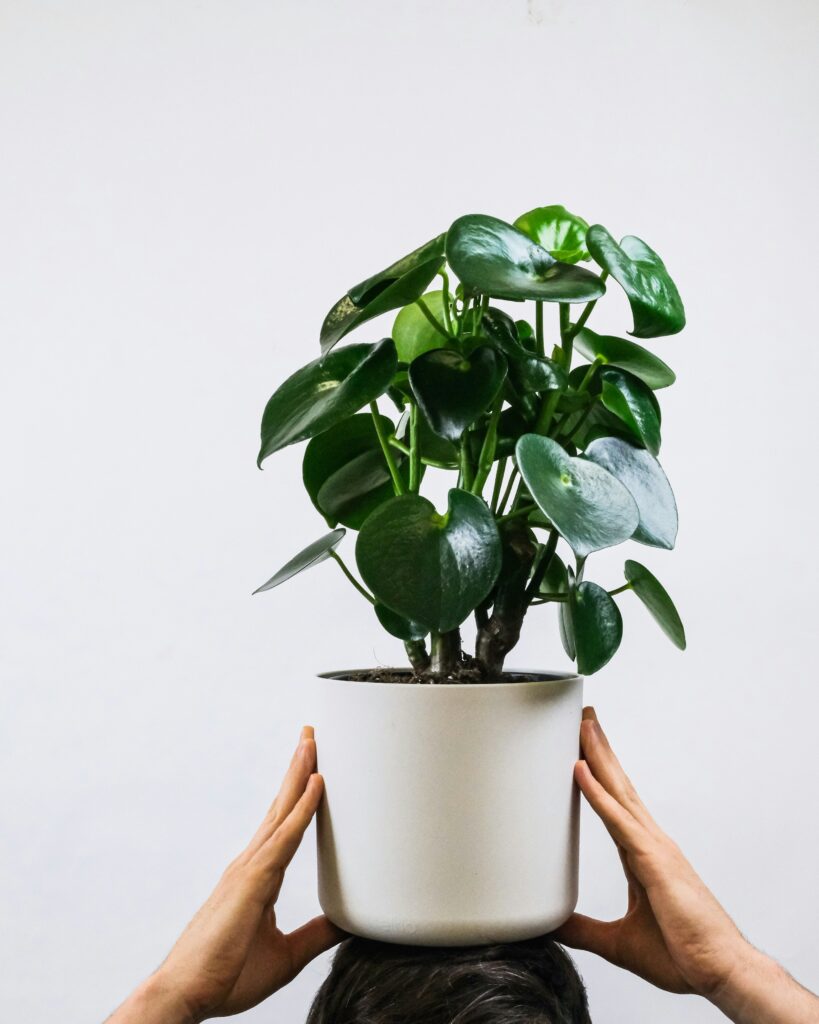
Pet safe
Bright light
Grows upto 3-4 feet
East/North facing windows
pet safe
Bright, light
grows to 3-4 feet
east/North facing windows
The Peperomia (aka Peperomia spp.), part of the Piperaceae family, is a charming low light trailing houseplant plant that has thick, glossy leaves that come in various shapes and patterns: from heart-shaped to rippled, and colors ranging from deep green to variegated silver and red.
We have placed it in our east-facing reading room where it thrives in indirect light. Peperomia is non-toxic to pets. This plant reaches about 6-12 inches in height. We’ve styled ours in a sleek ceramic planter that complements its modern appeal, but this will also look amazing in a hanging planter! This is one of the best trailing plants for shelves!
Care tip:
- Water your Peperomia every 1-2 weeks.
- Place it in medium bright, indirect light, such as an east-facing room.
- Watch for yellowing leaves, which can indicate overwatering
Propagation tip:
- Cut a healthy leaf with at least one inch of stem and place it in water.
- Use a jar that allows the stem to be submerged while the leaf stays above water.
- Roots should start forming in 2-3 weeks. Transfer to well-draining potting soil once roots are 1-2 inches long
Symbolism and zodiac signs:
- Symbolizes friendship and positive energy. It is a perfect match for the sociable and caring Libra
Pros and cons
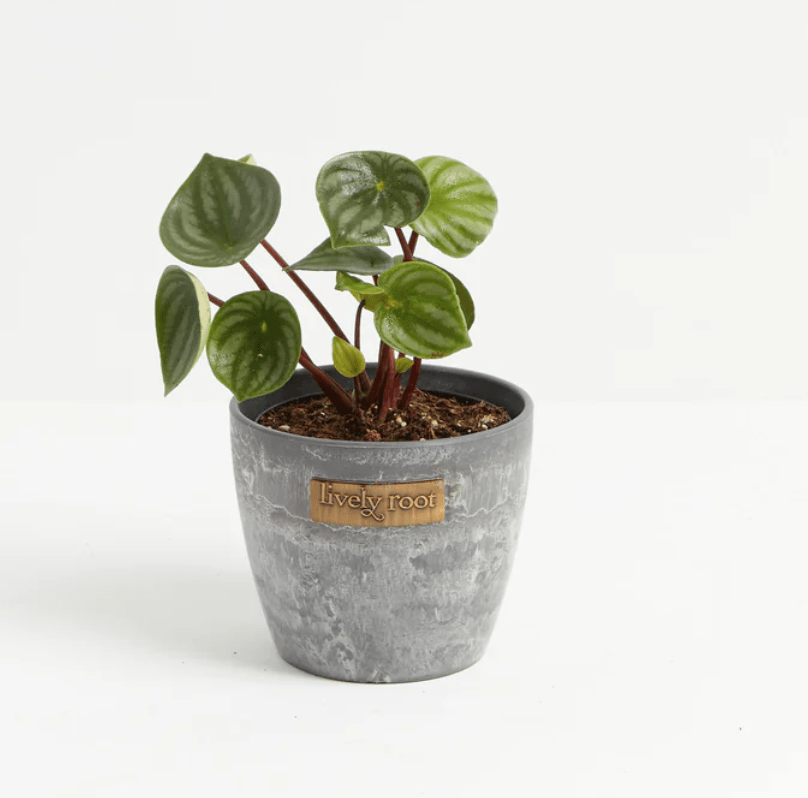
($43)
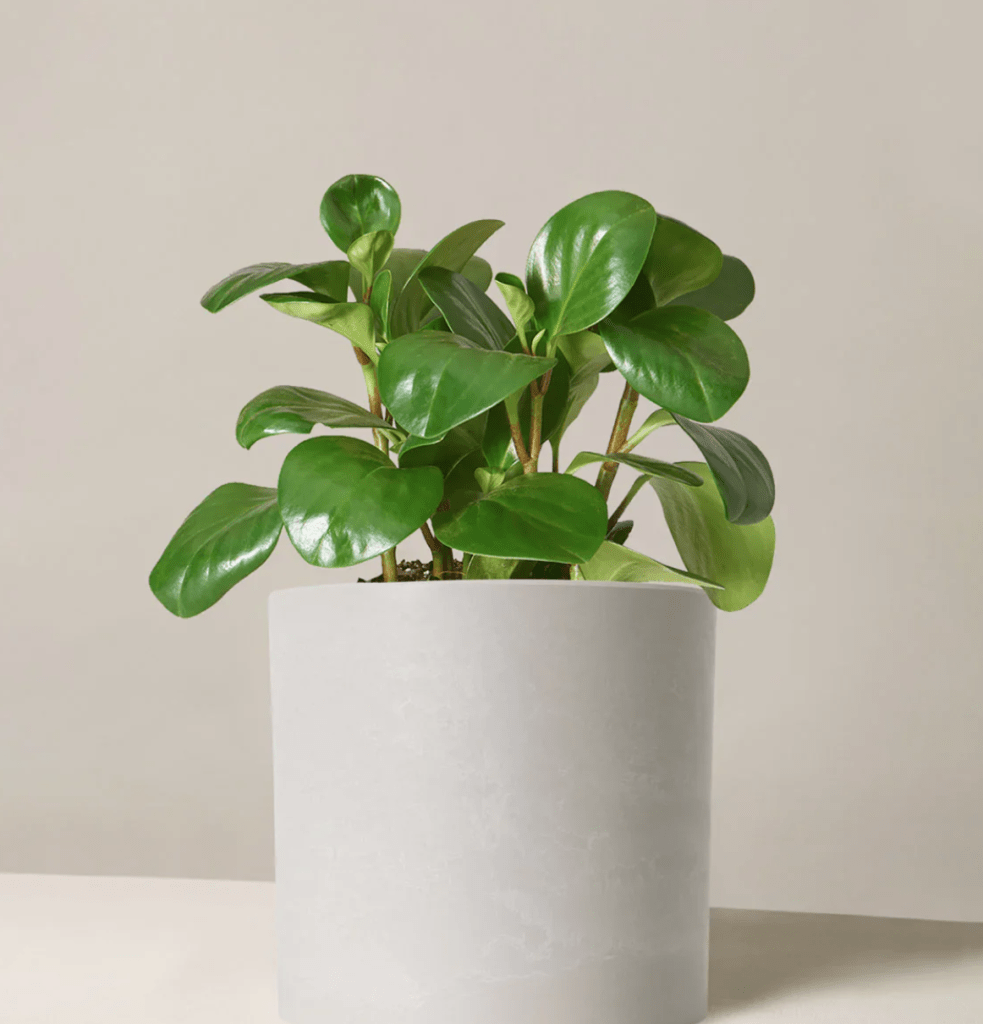
($58)
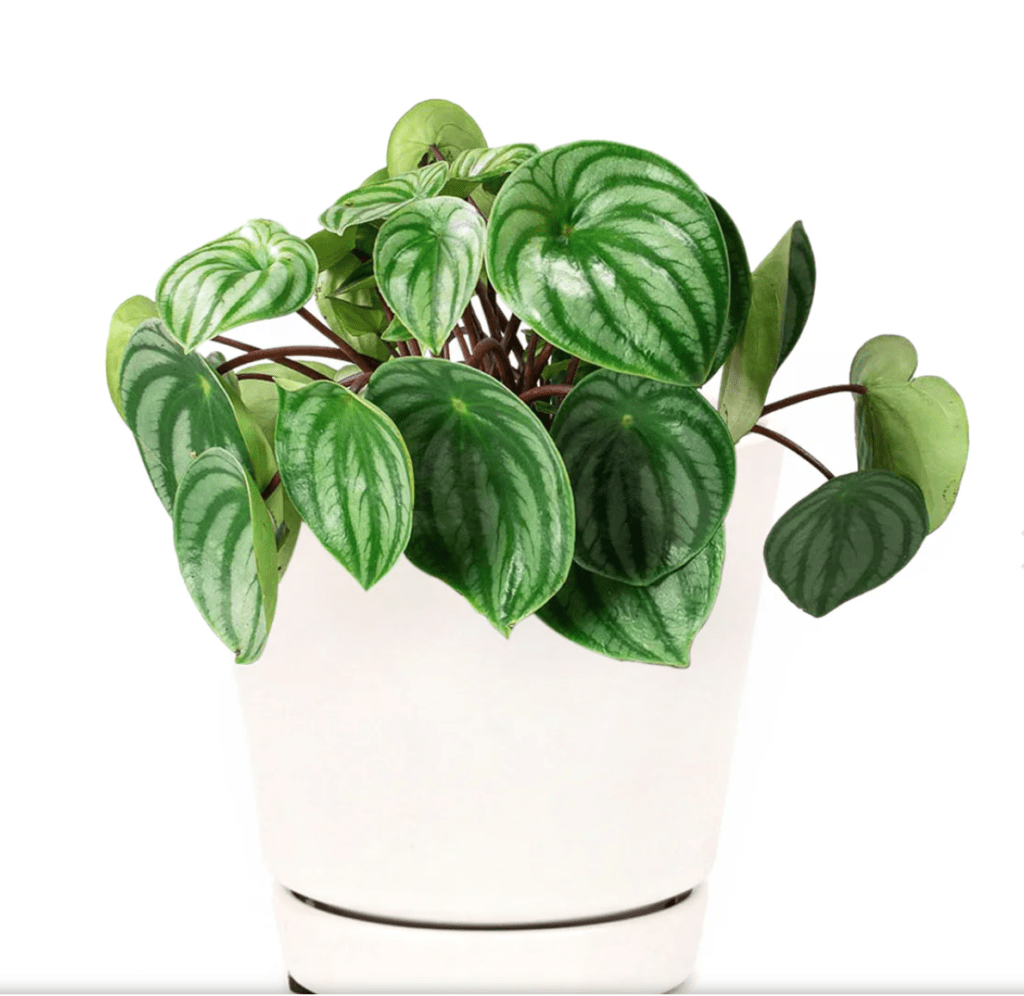
($26)
$20
“So easy to maintain. It likes to be neglected sometimes i don’t water for 3 weeks and its fine!” – Amazon customer
5. Hoya

Pet safe
bright light
Grows upto 3-4 feet
East/North/west facing windows
pet safe
Bright light
grows to 3-4 feet
east/North facing windows
The Hoya Plant (aka Wax plant) belongs to the Asclepiadaceae family and has become a standout addition to our home. We have placed it in the west-facing bedroom on the first floor. Its waxy leaves glisten under the sunlight, and capture our guests attention with their unique shapes and sometimes even speckled or marbled patterns.
During spring, the Hoya surprises us with clusters of sweet-scented, star-shaped flowers that seem almost sculpted from wax — trust us, this is a keeper! We’ve chosen a rustic terracotta hanging planter for it, enhancing the organic elegance it lends to our space!
Care tip:
- Place it in a spot that gets medium to bright, indirect sunlight.
- Water your hoya only when the soil has completely dried out—about every 10 to 14 days, and less frequently in winter. Hoyas store water in their leaves.
- These plants thrive in average household humidity and prefer temperatures between 60-85°F.
- Avoid pruning the flower stalks after blooming as they will rebloom from the same spurs
Propagation tip:
- Cut a 4-5 inch stem below a node, strip lower leaves, submerge one node in water, and place in bright, indirect light.
- Change water every few days. Expect roots in about a month, then pot in soil
Symbolism and zodiac signs:
- Symbolizes protection and spiritual healing. Individuals born under the zodiac sign of Cancer are well-suited to care for this plant!
Pros and cons

($35)

($48)

($39)
$23
“hoya plant feels so exotic. This is one plant I rarely see in other households and is so easy to manage!” -Amazon Customer
6. Aloe vera
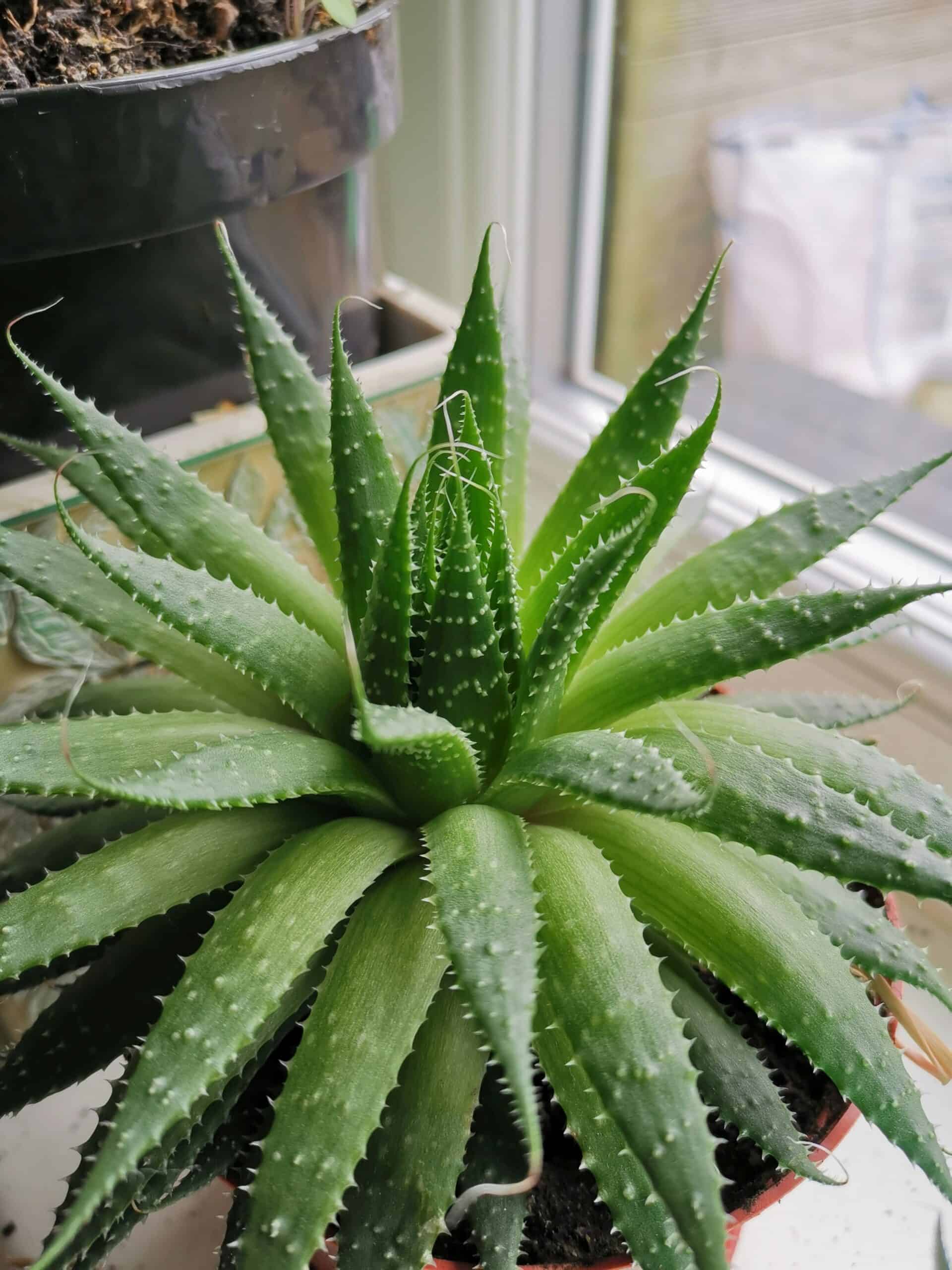
Toxic
Bright light
Grows upto 3-4 feet
South facing windows
Toxic
Bright, light
grows to 3-4 feet
South windows
Aloe Vera (aka Aloe barbadensis miller): This air purifying indoor plant, from the Asphodelaceae family, has thick, fleshy, green leaves edged with small teeth. This hardy one thrives in bright, indirect light and requires minimal watering. We have placed ours in the top floor south-facing room windowsill to soak up plenty of sunlight.
It is styled in a small terracotta pot, as it can grow only upto 20-24 inches tall, but this could also very easily be hung especially if you have curious cats and you want this plant to be out of reach for them. Expect tubular yellow flowers in the summer!
Care tip:
- Needs water every 3 weeks or when the top 2 inches of soil are dry.
- Avoid overwatering—look for soft, mushy leaves as a sign of excess moisture.
- It prefers well-draining soil and can handle low humidity.
Propagation tip:
- Cut a healthy aloe vera leaf, let it dry for 1-2 days until the cut end calluses, then place it in well-draining soil with the cut end buried 1-2 inches deep.
- Water lightly every few days. Roots should form in 3-4 weeks.
Symbolism and zodiac signs:
- Symbolizes healing and protection, and it’s well-suited for Virgo, known for their nurturing and practical nature
Pros and cons
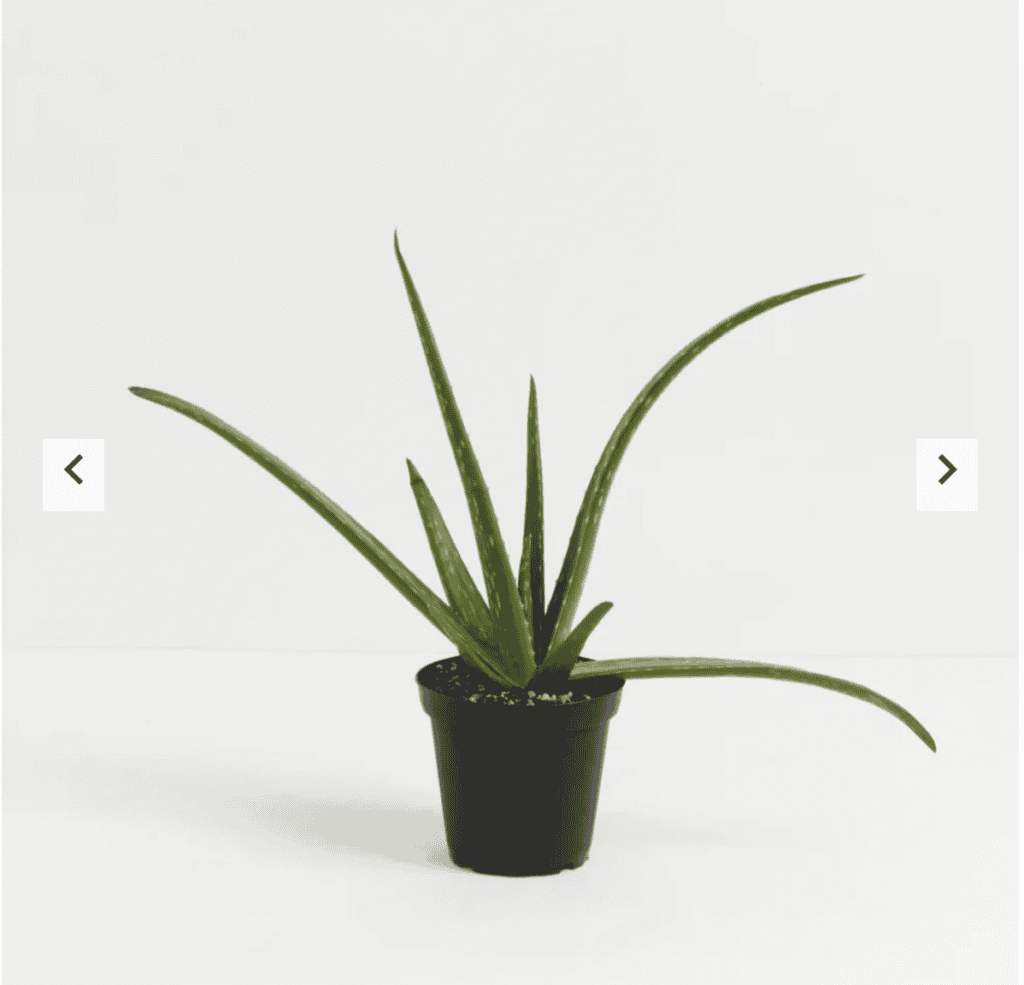
($43)
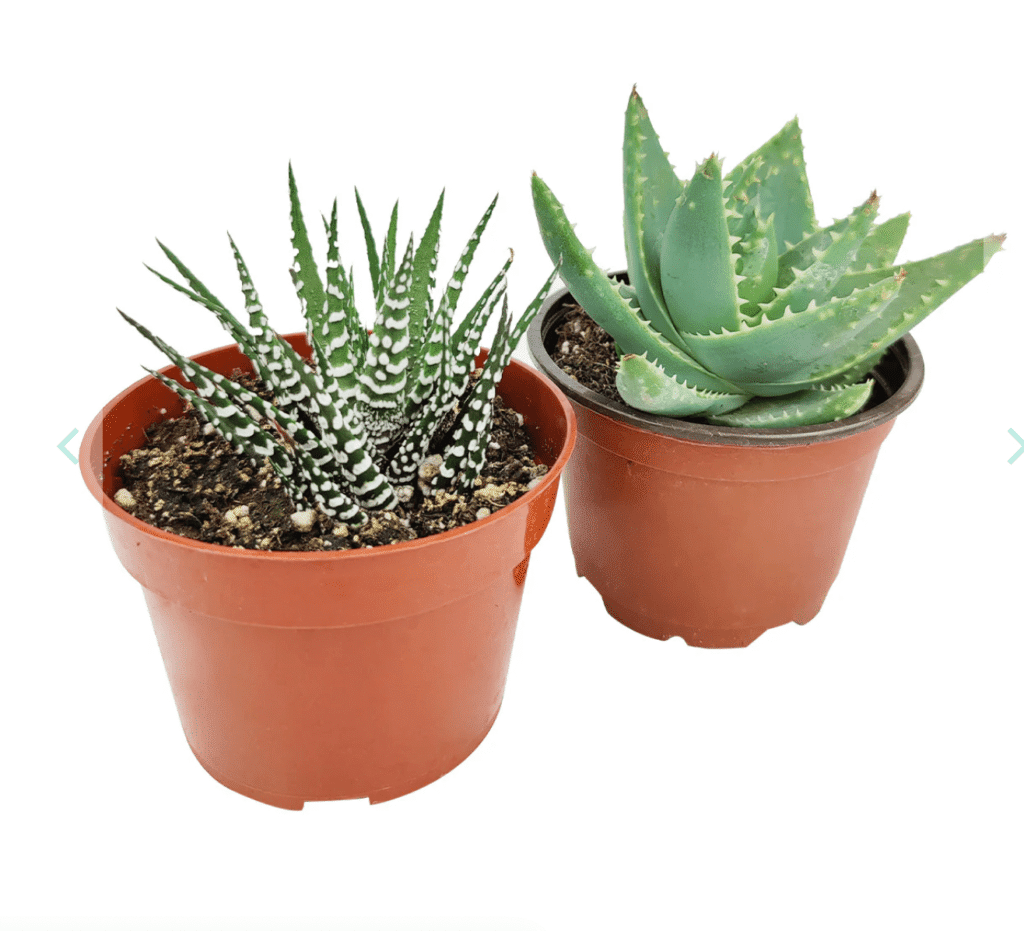
($19)
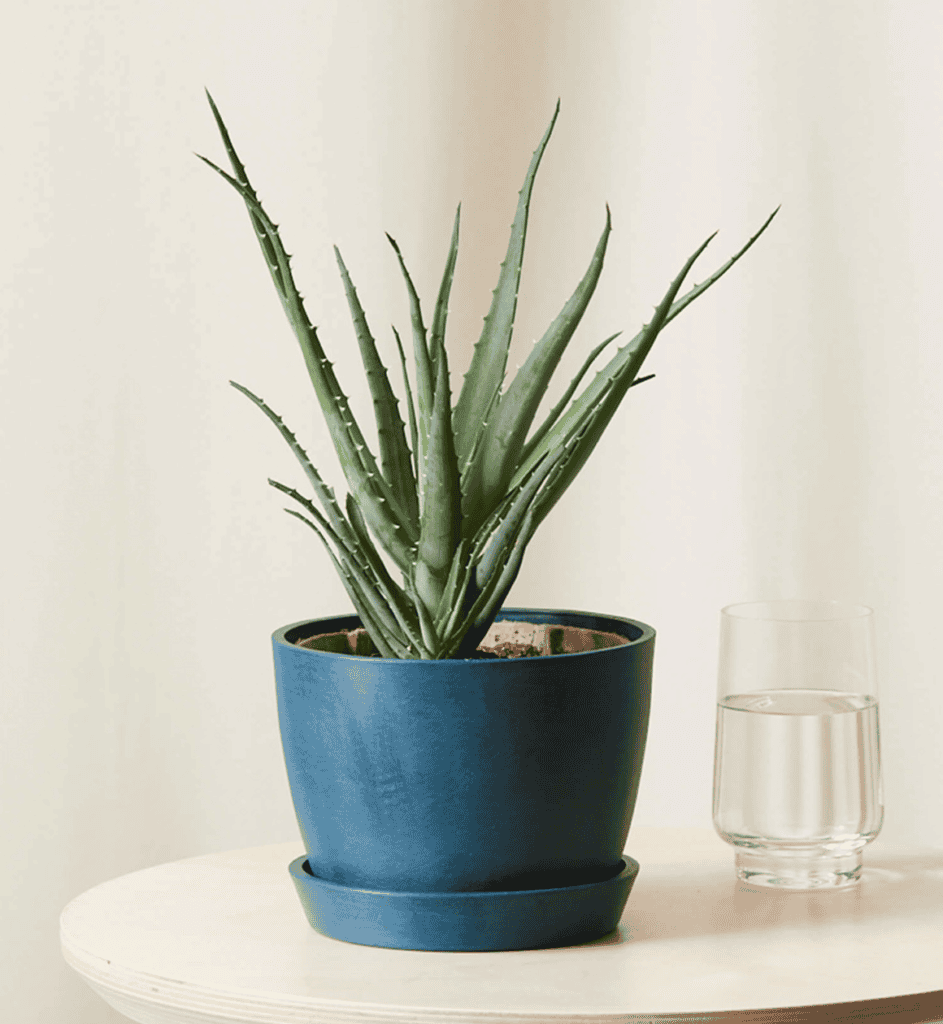
($33)
$34
“This plant is perfect for dry conditions. It’s doing great in my sunny window”
Best Fast growing trailing indoor plants
How to choose best trailing indoor plants?

Here are the top 5 things to consider:
Assess the Drip and Drainage Needs
Trailing houseplants need good drainage to prevent root rot. Plants like: Golden Pothos or Spider Plant thrive with proper drainage and are less likely to suffer from waterlogged conditions. Ensure your hanging planter has a drainage hole and a saucer or catchment system to manage water runoff. We usually remove the hanging planter from the hook and take it to a tub to water it.
Evaluate Space for Growth and Trailing
Consider the length of the plant’s tendrils or vines and how much space you have for them to cascade. Plants like String of Pearls and Boston Fern can grow long, so choose a right space for them. But plants like spider plant won’t grow more than 4 feet so you don’t need too much vertical space for it. Avoid plants that require a lot of horizontal space unless of course you have ample room
Read also: our guide to training trailing plants to grow longer vines, and how to make them climb
Check Weight and Support Requirements
Some hanging plants like Burro’s Tail or Hoya can become quite heavy as they grow. Make sure your chosen plants are suitable for the strength of your hanging fixtures and that your ceiling or wall can support their weight. Use sturdy hooks and anchors to prevent accidents and ensure safety.
Consider Maintenance and Accessibility
Trailing plants like English Ivy and Philodendron require regular pruning and can be tricky to water if hung too high. Choose plants based on how accessible you want them to be for maintenance. Easy care plants like Spider Plants are great for higher spots where frequent care might be inconvenient. We do have a stool we use for all hanging plants, as most of ours are high up, but you could also build a reachable shelf and hang from it.
Different plants thrive in different indoor conditions
For humid environments like bathrooms: Ferns or Air Plants are ideal because they thrive in moisture-rich air. For sunnier spots, choose Cacti or Succulents that can handle less frequent watering and direct sunlight. Any tropical plant is best for bathrooms. Below we provide information on humidity requirement so you can choose for yourself.
How to create a Vertical Garden with Trailing indoor plants: A Step-by-Step Guide
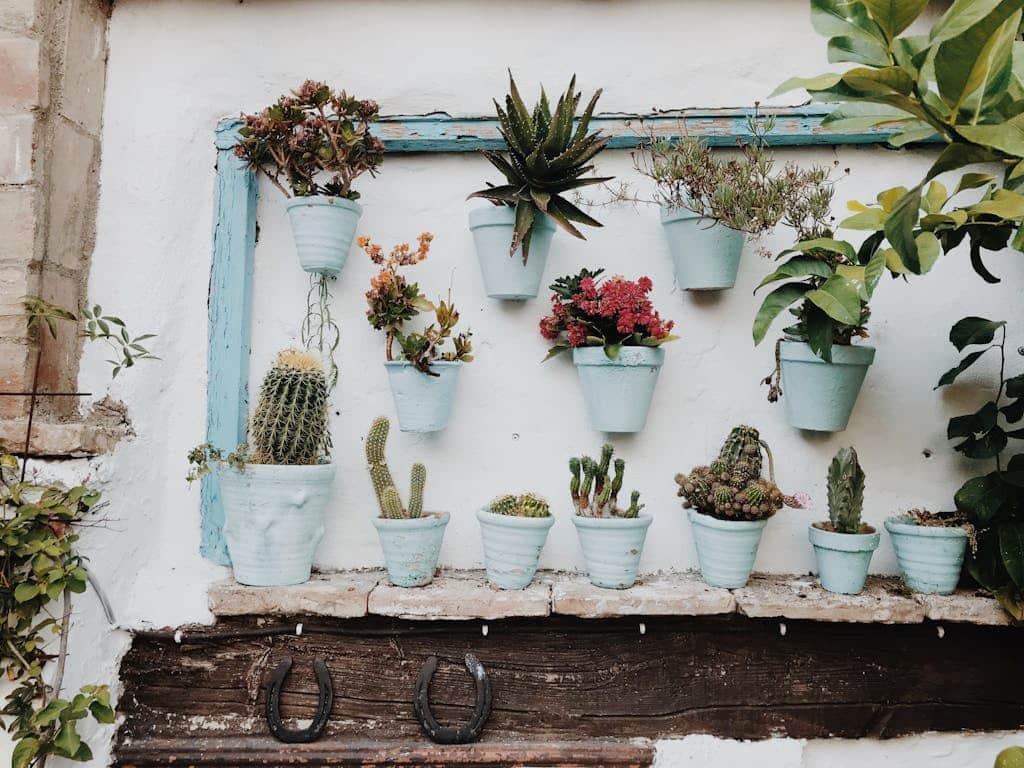
Here are the top 5 things to consider:
Plan Your Vertical Space Layout
Begin by measuring the space where you plan to hang your plants – use height variations and stagger the plants at different levels to create visual curiosity. We love a zig-zag structure. Use a mix of hooks, shelves, and wall-mounted planters, trellises to design a layout that maximizes the vertical space.
Sometimes they can feel a bit overcrowded and although it seems to be normalized now, we do recommend ensuring it doesn’t become a mish-mash of all greens, but giving each plant its time and space in your house 🙂
Choose Complementary Plants
Select plants that complement each other in terms of growth patterns and light requirements – pair a fast-growing plant like Golden Pothos with slower-growing Hoya. Also good to mixing plants with varying textures and leaf shapes: feathery Boston Fern and the succulent String of Pearls would depth to your vertical garden.
Install Secure Mounting Systems
Use heavy-duty hooks or wall anchors to securely mount your trailing plants – for larger or heavier plants use macrame hangers with strong, braided supports to distribute the weight evenly and prevent damage. Ceiling S shaped hooks are very sturdy and great as well. We use that and mount it sideways. onto the walls and let our plants hang from it. But you can also get creative and paint the hooks 🙂
Incorporate Multi-Level Lighting
Ensure your vertical garden receives adequate light at all levels – place light-loving plants like String of Pearls higher up to receive more light, and shade-tolerant plants like Maidenhair Fern lower down where light is less intense. Use this general idea for any plant you chose based on their light requirement. We provide each plants light requirement below!
Create a Watering Schedule
You could also group plants with similar water needs together to make watering easier and prevent overwatering or underwatering different species. What we do is use our tub in the bathroom to put all these hanging plants together and water them untill the water in the tub is sucked in by the plants.
How to style and create DIY planters for your trailing indoor plants?



Here are the top 5 things to consider:
Convert Mason Jars into Hanging Planters
Clean and drill drainage holes in the lids of mason jars, then attach them to a wooden plank with metal brackets for a rustic, wall-mounted hanging garden. Or you could just place them in the shelf as well, as is. Eventually when the plant outgrows, you’ll have to phase them out, but that’s a good problem to have. But you could also consider planting small, moisture-loving plants like: Air Plants or Herbs that benefit from the clear jars because they allow for easy monitoring of soil moisture, and won’t outgrow for years.
Craft Macrame Hangers for a Boho Look
Use macrame techniques to create intricate hangers from cotton rope – these hangers are perfect for plants like Spider Plant or Philodendron, which look stunning as their long tendrils drape down from the macrame holders
Build Wooden Planter Boxes for Vertical Gardening
Repurpose old tin cans by cleaning, painting, and adding drainage holes. Then, use sturdy twine or metal chains to hang them from hooks or wall mounts. These lightweight and colorful planters are ideal for small, hardy plants like Succulents or String of Pearls because they don’t need much soil depth, and makes for a really cute DIY date with a friend 🙂
Use Vertical Space
Use reclaimed wood, drill drainage holes and line them with landscape fabric to prevent soil loss. Attach these boxes to a sturdy wall or hang them with heavy-duty hooks. Fill them with cascading plants like English Ivy or Ferns for a lush, green wall effect. We have this in our kitchen/dining area because it complements the cups and saucers we have out there hung to the walls!
Use Fabric Plant Hangers for a Soft, Artistic Touch
Cut strips from old T-shirts or other fabric to make braided hangers that cradle small pots – great for lightweight plants like Herbs or Small Succulents. The soft texture of fabric hangers adds a cozy, artistic element to your space and makes it easy to move plants around!
FAQ
What are the best low-light trailing houseplants?
Pothos, Philodendron, Spider Plant, and Heartleaf Philodendron. These plants thrive in indirect light and are ideal for areas in your home that don’t receive much sunlight
How do I prevent my trailing plants from dripping water indoors?
Use planters with proper drainage and saucers to catch excess water. You could also place a layer of pebbles at the bottom of the pot to improve drainage and avoid overwatering. Regularly check the saucer and empty it to prevent overflow
What is the best way to water trailing plants?
Use a long-neck watering can to reach higher spots or by taking the plant down to water it thoroughly. Ensure the soil is evenly moist but not waterlogged, and allow excess water to drain out before hanging it back up.
How can I ensure my trailing plants get enough light?
Place your hanging plants near windows or under grow lights to ensure they receive adequate light. Rotate the plants regularly to expose all sides to light evenly. Higher the plants light requirement, higher it needs to be placed, reserve the lower levels for low light requirement plants.
What are the easiest trailing plants to care for?
Golden Pothos, Spider Plant, English Ivy, and String of Hearts.
Conclusion
We hope this article has been useful for you to take the leap and start using trailing plants to elevate your interior decor. Like we said before, hanging plants are the secret ingredient for making the living space have depth and height and feel organic with other plants and furniture, and we hope you will give our tips a shot. Let us know in the comments if you have any questions. If you have any tips for new parents, please put it in the comments as well and help the community out. Happy planting!

